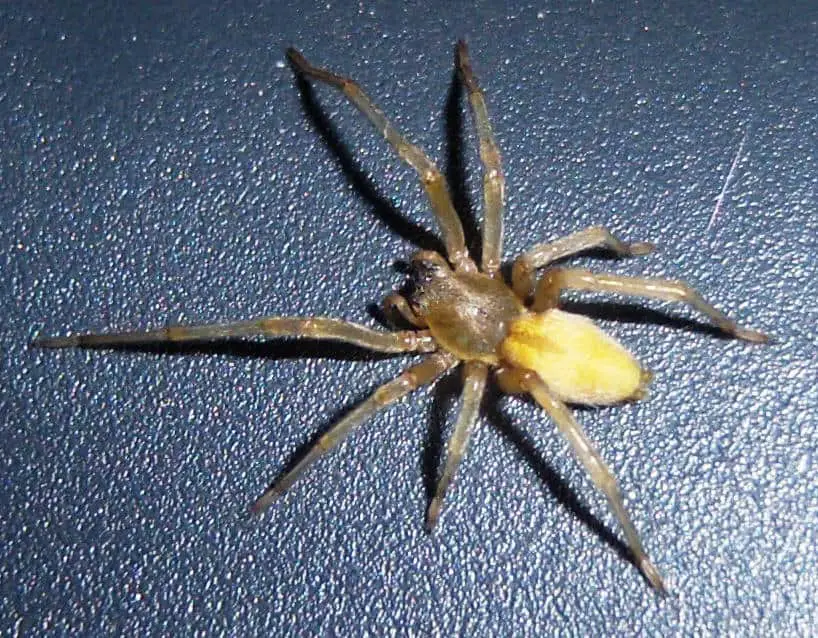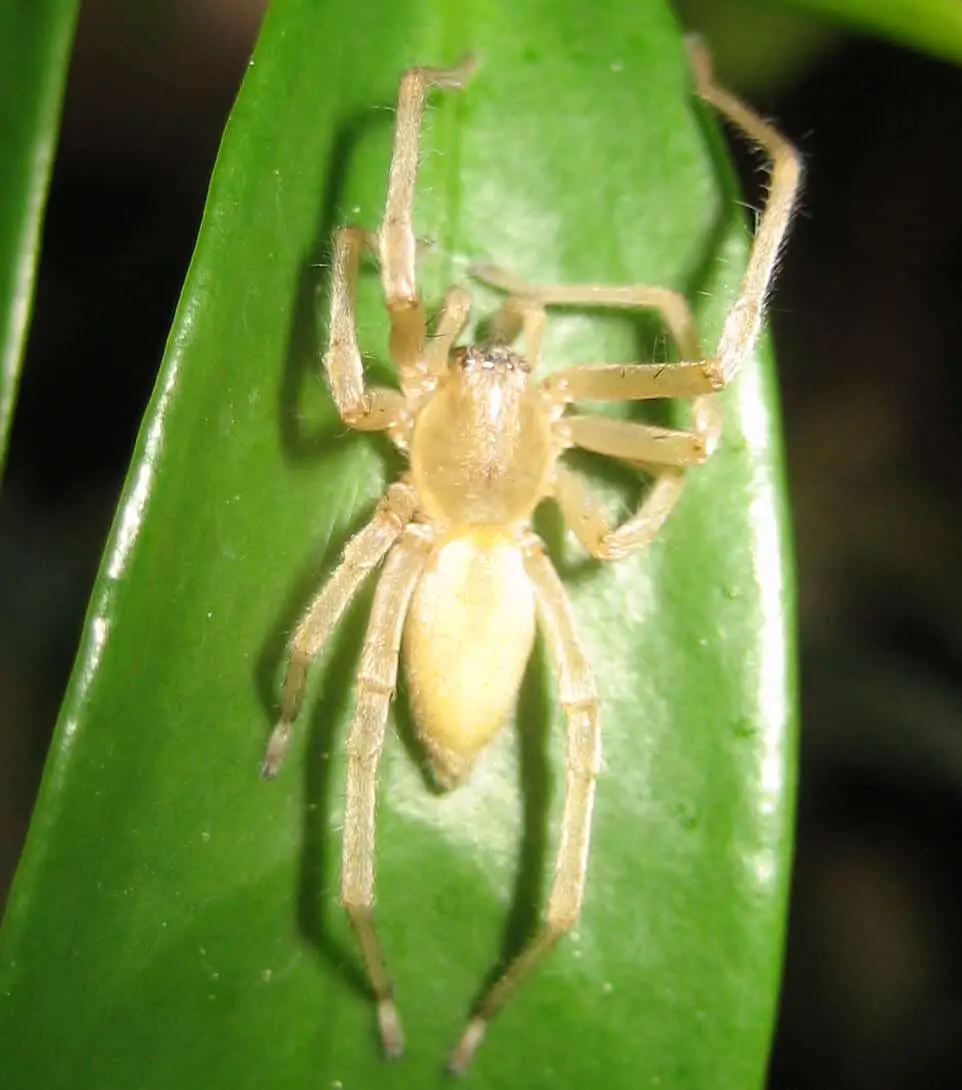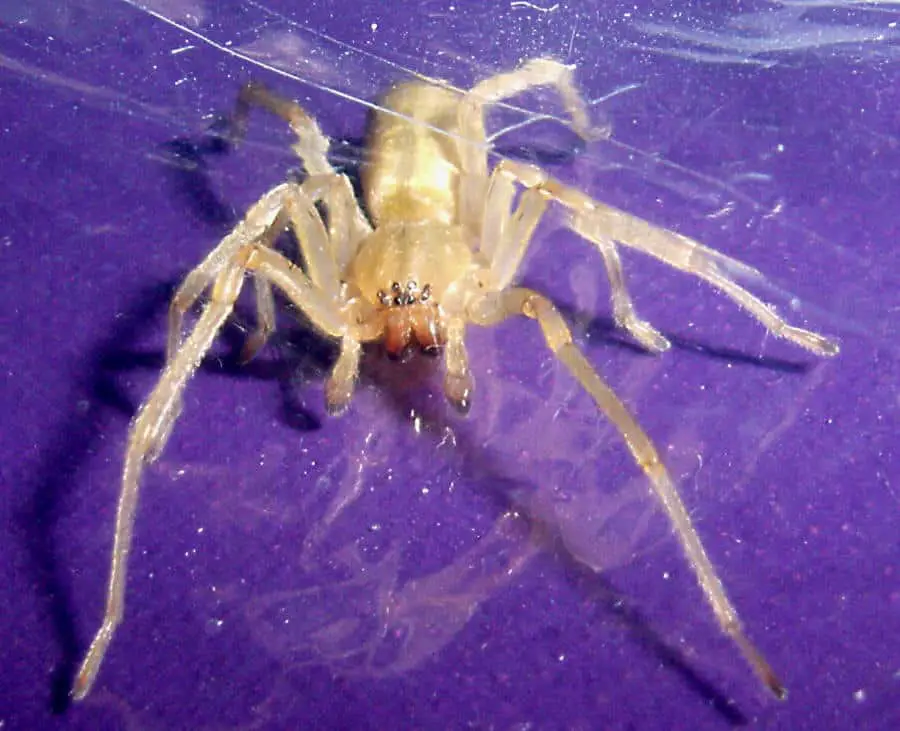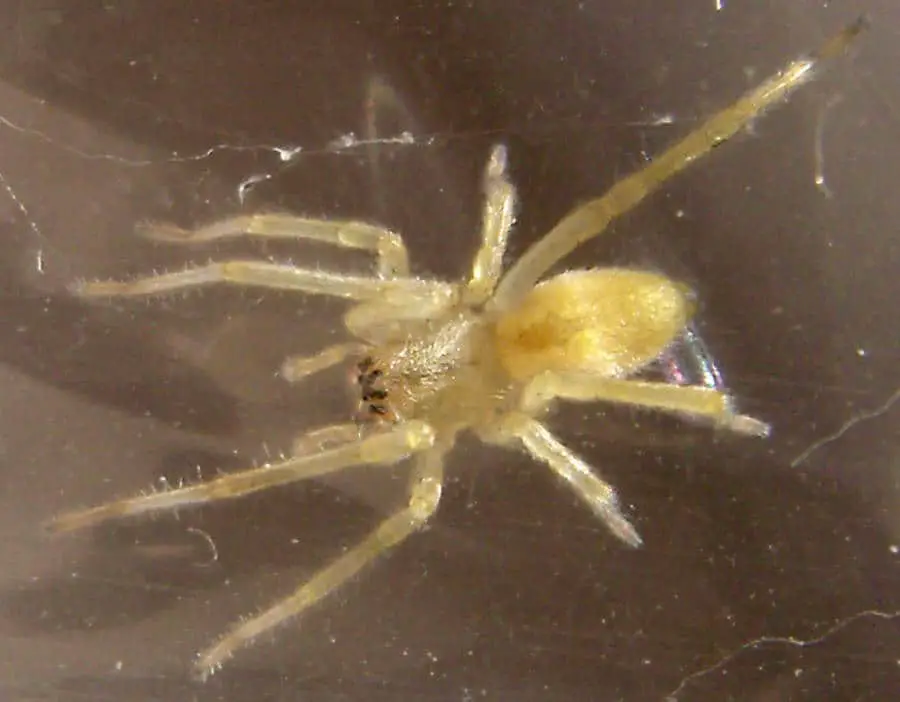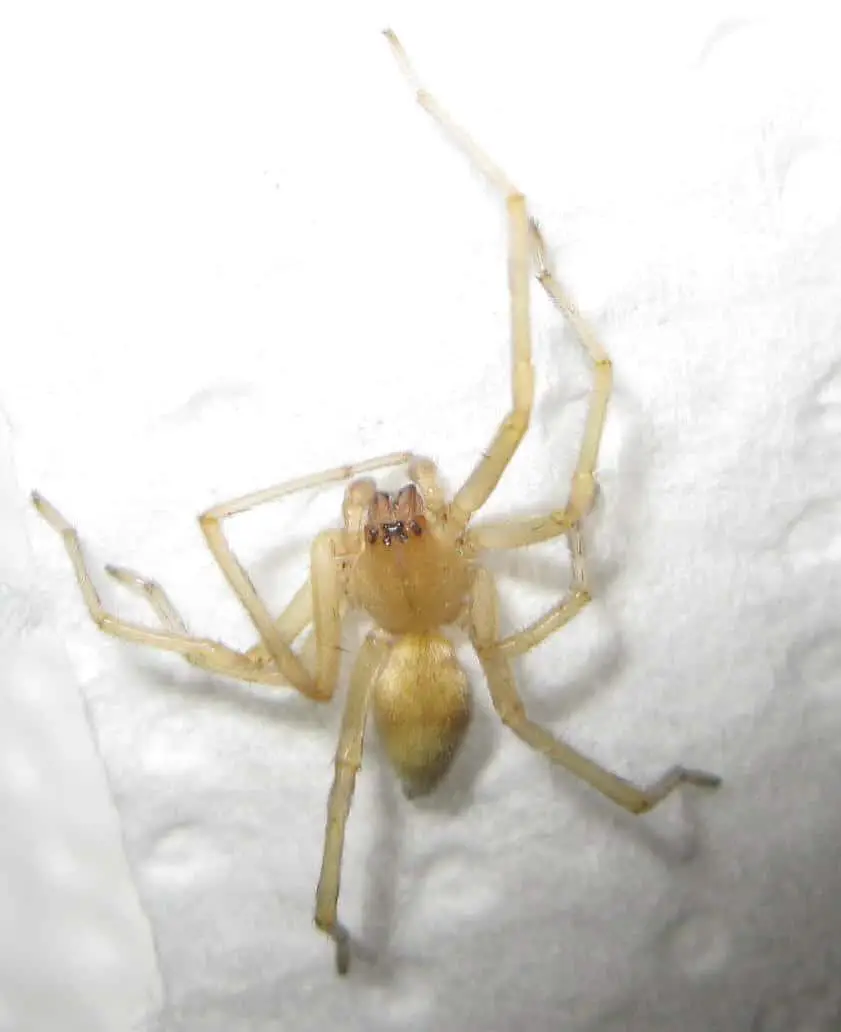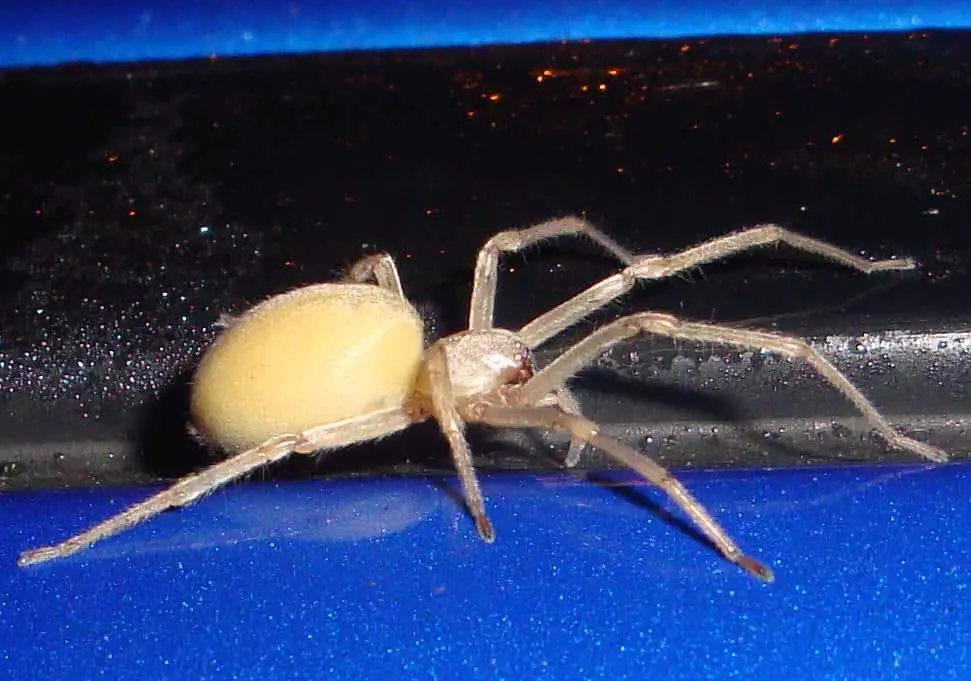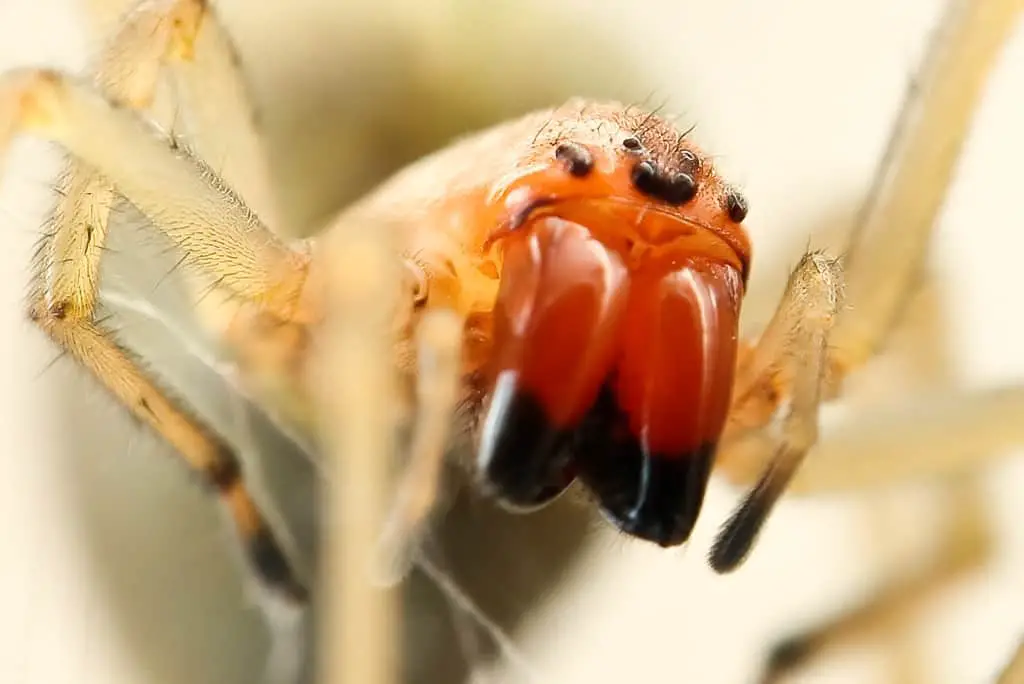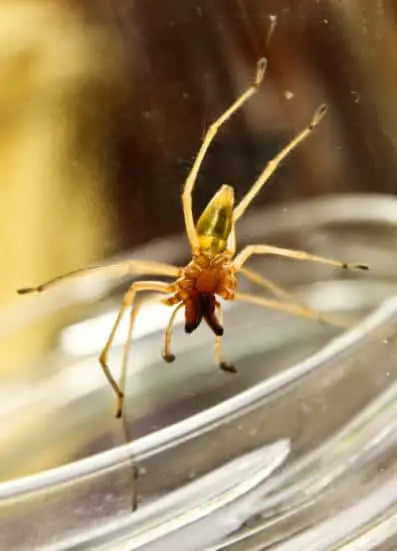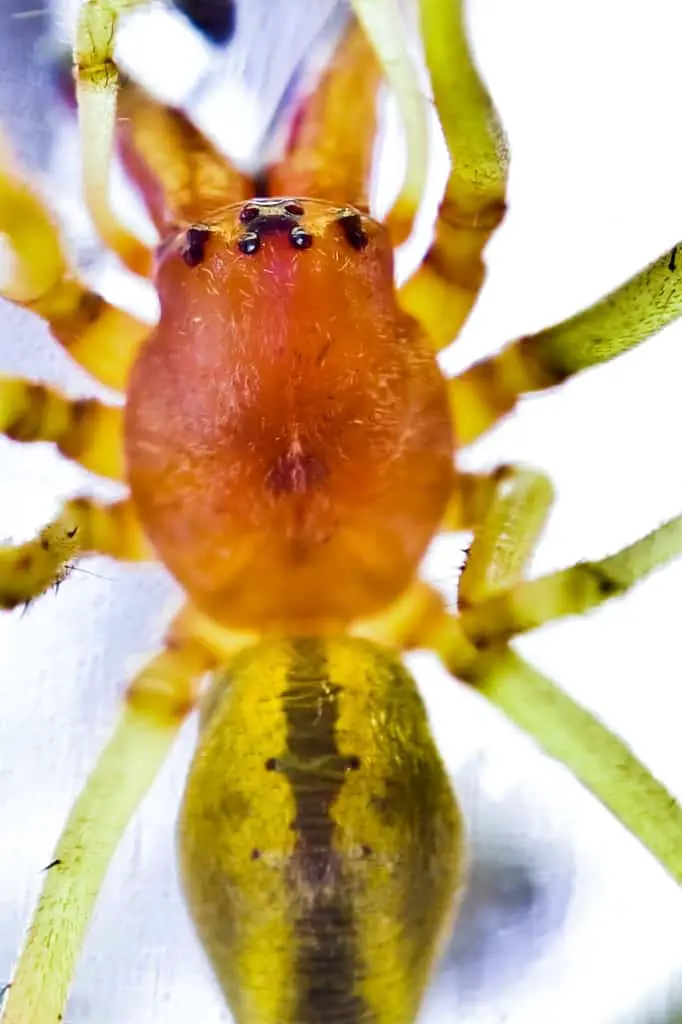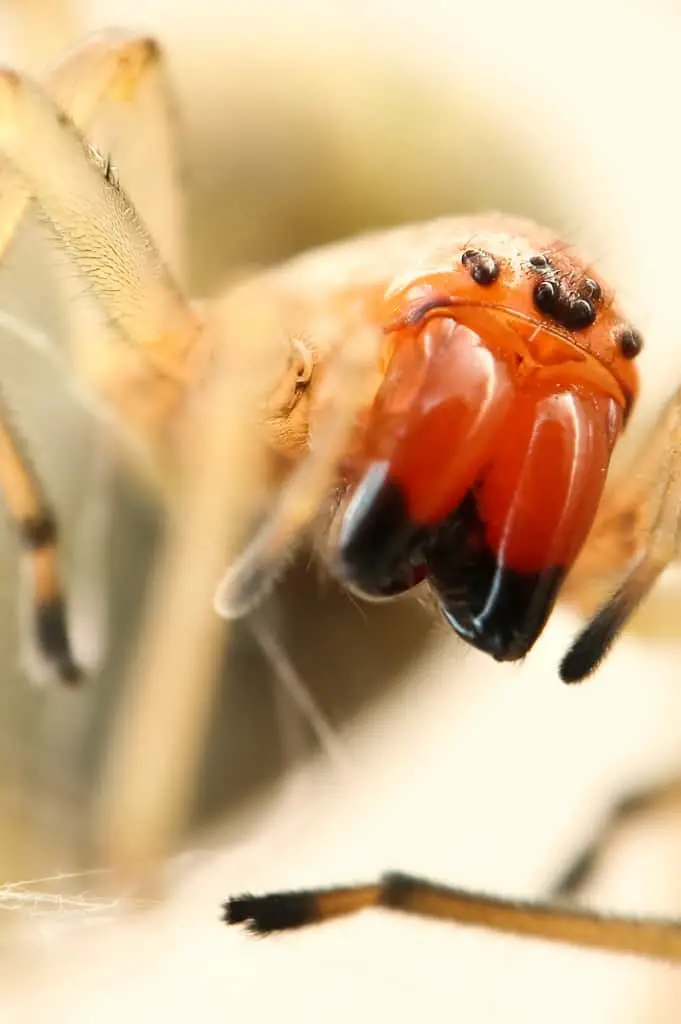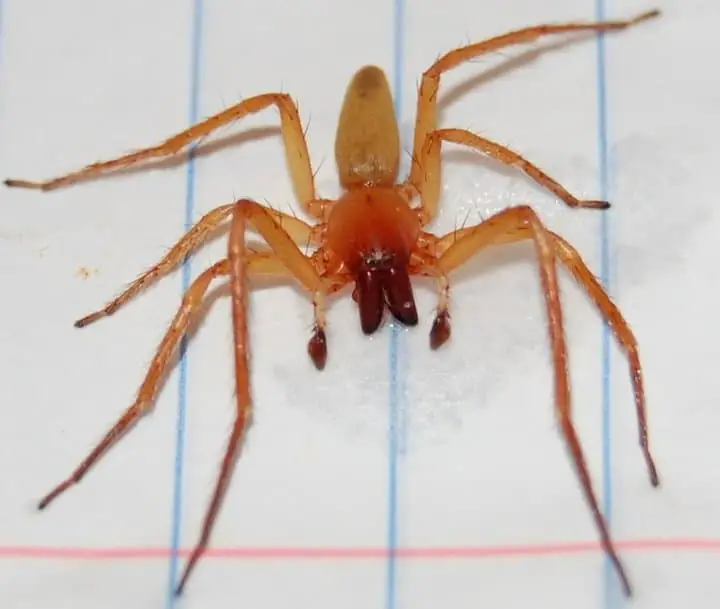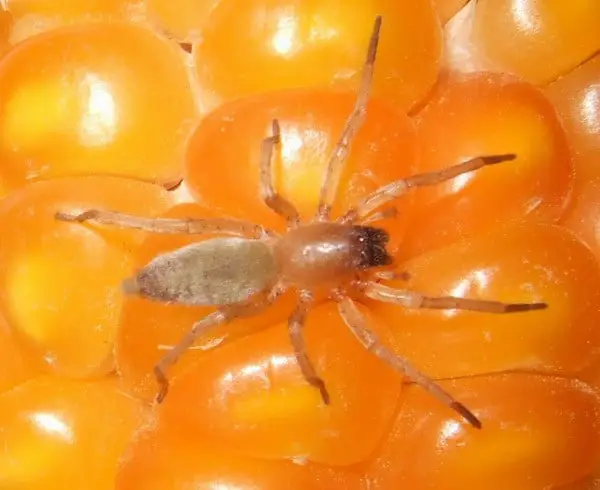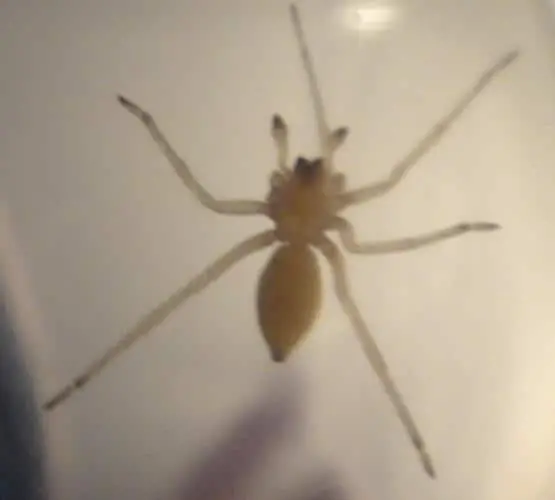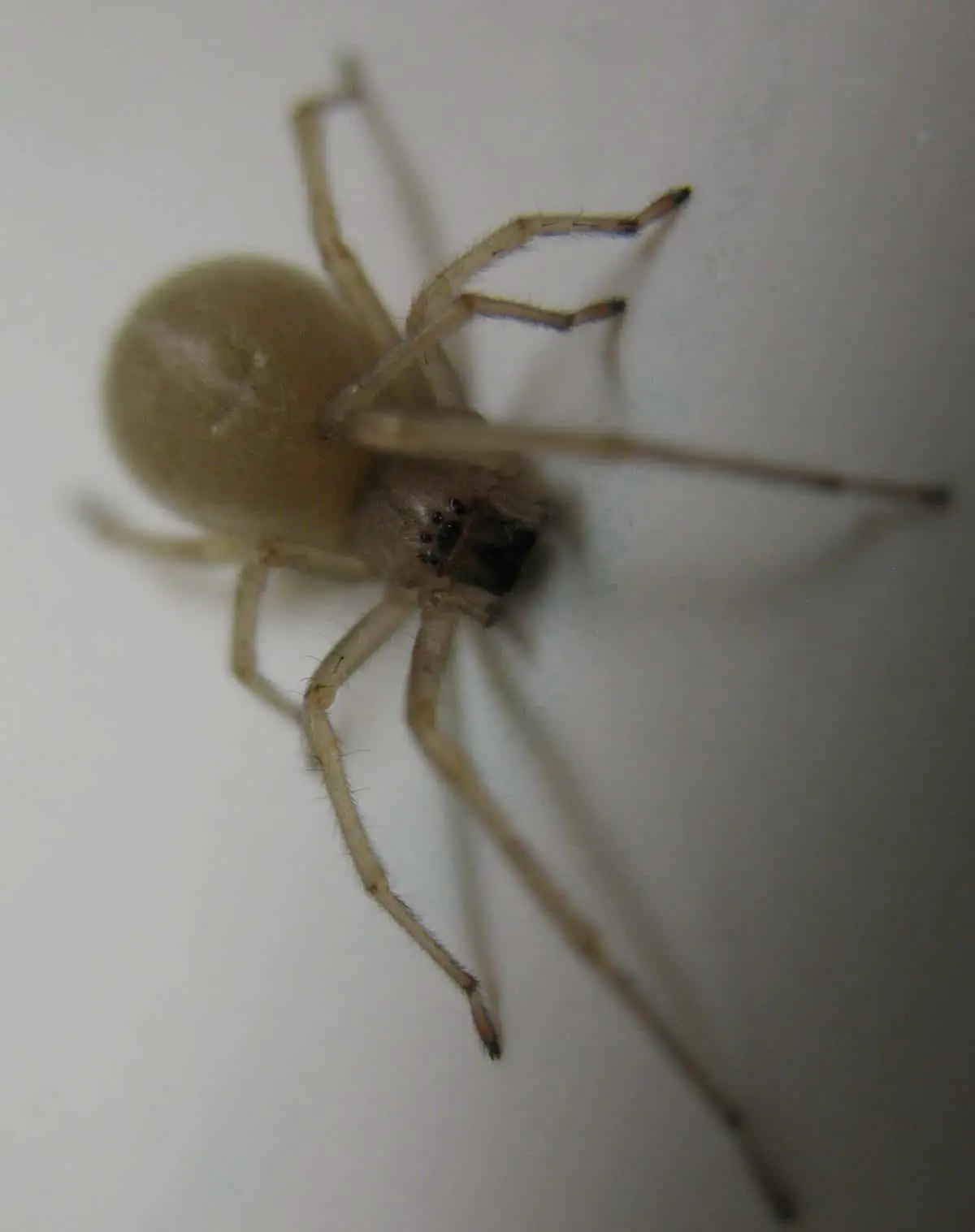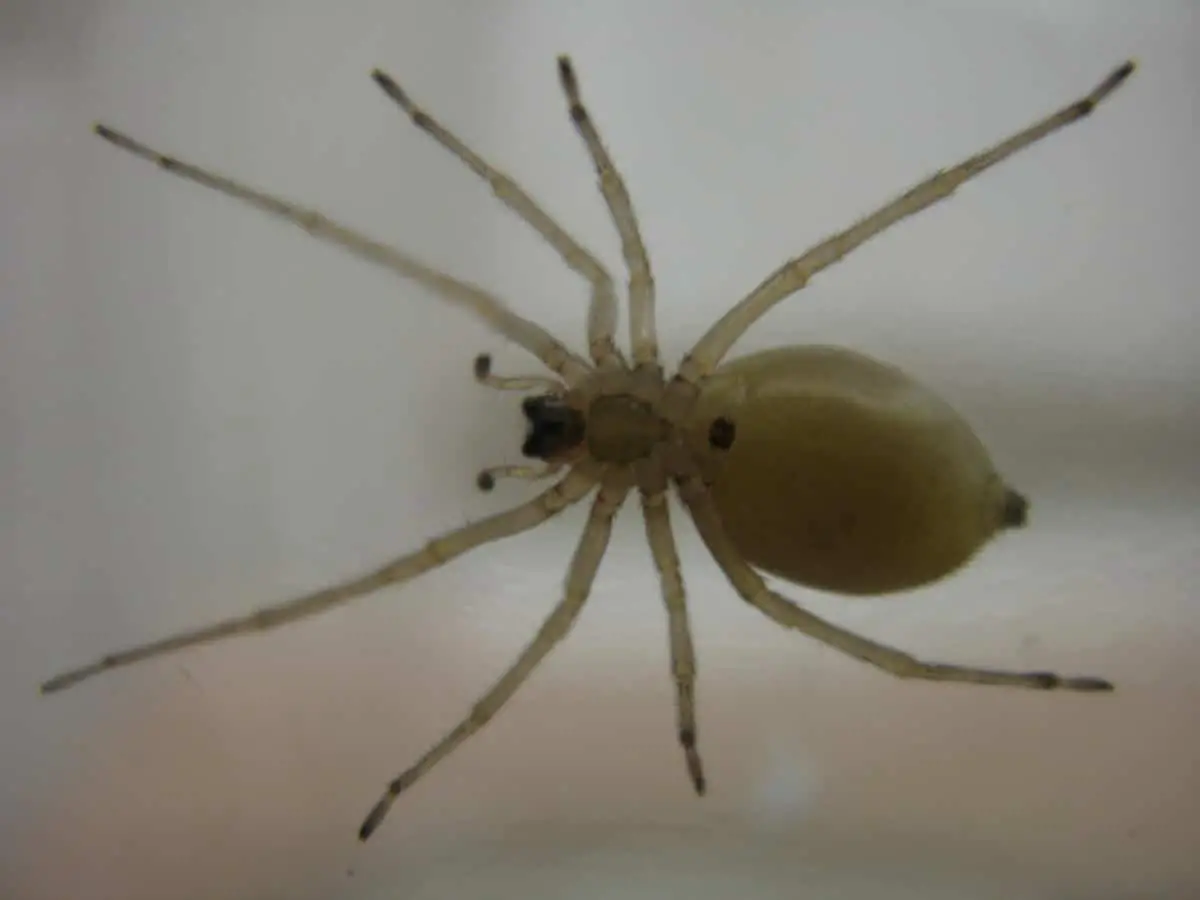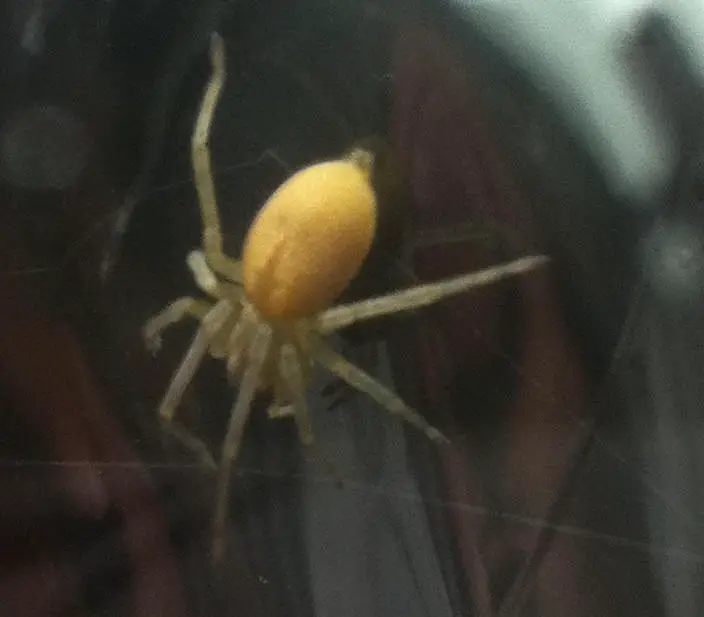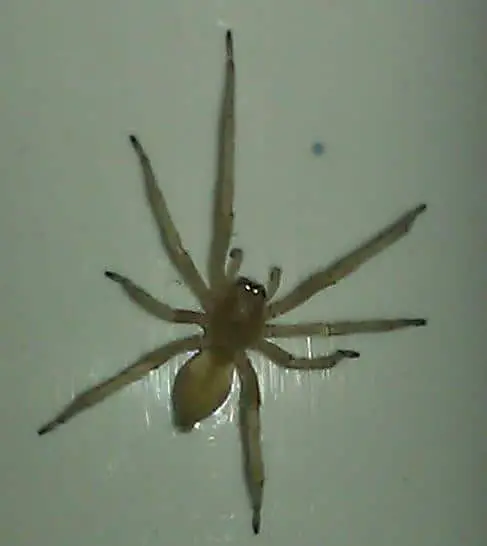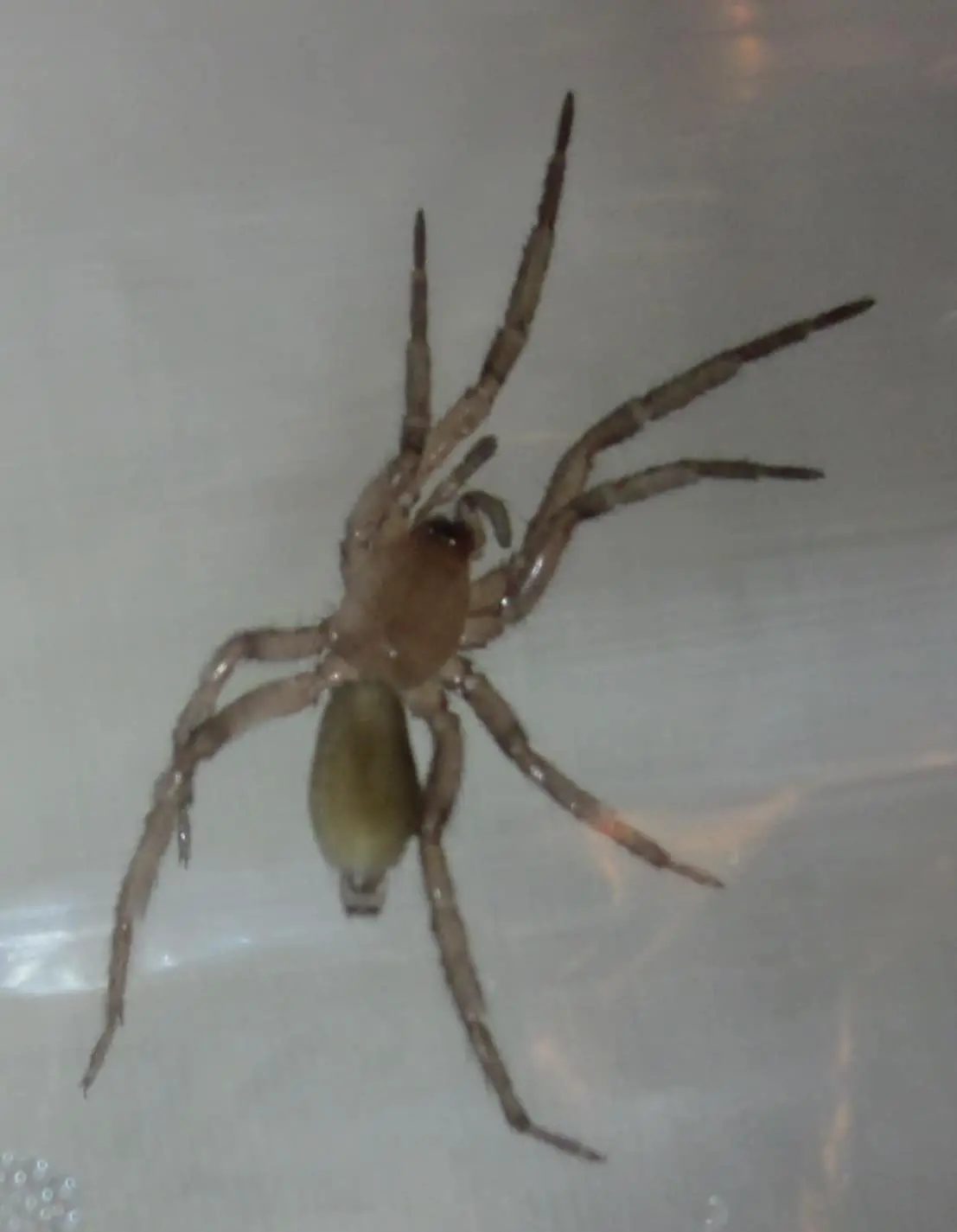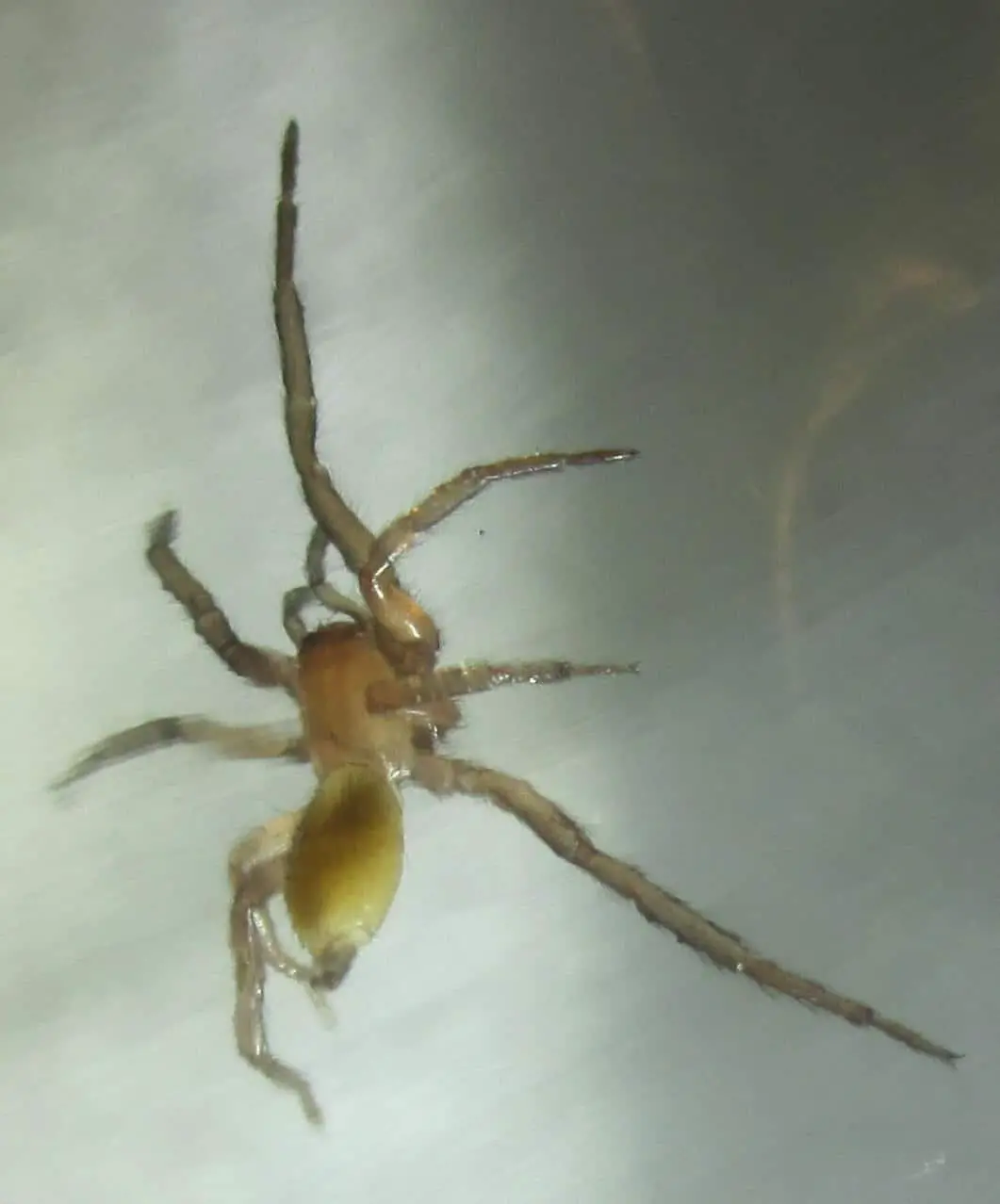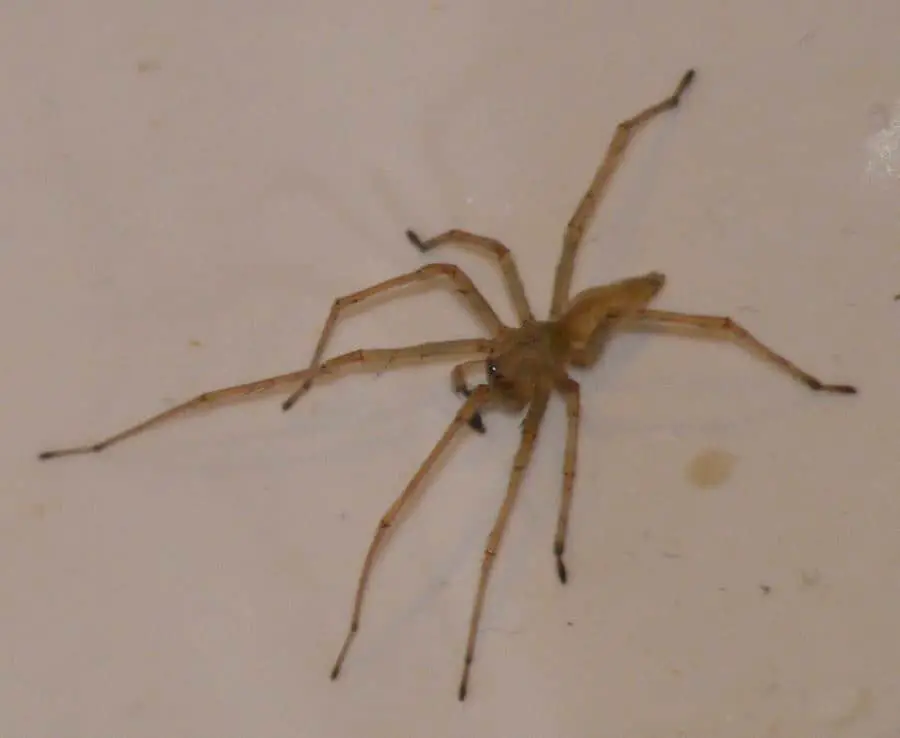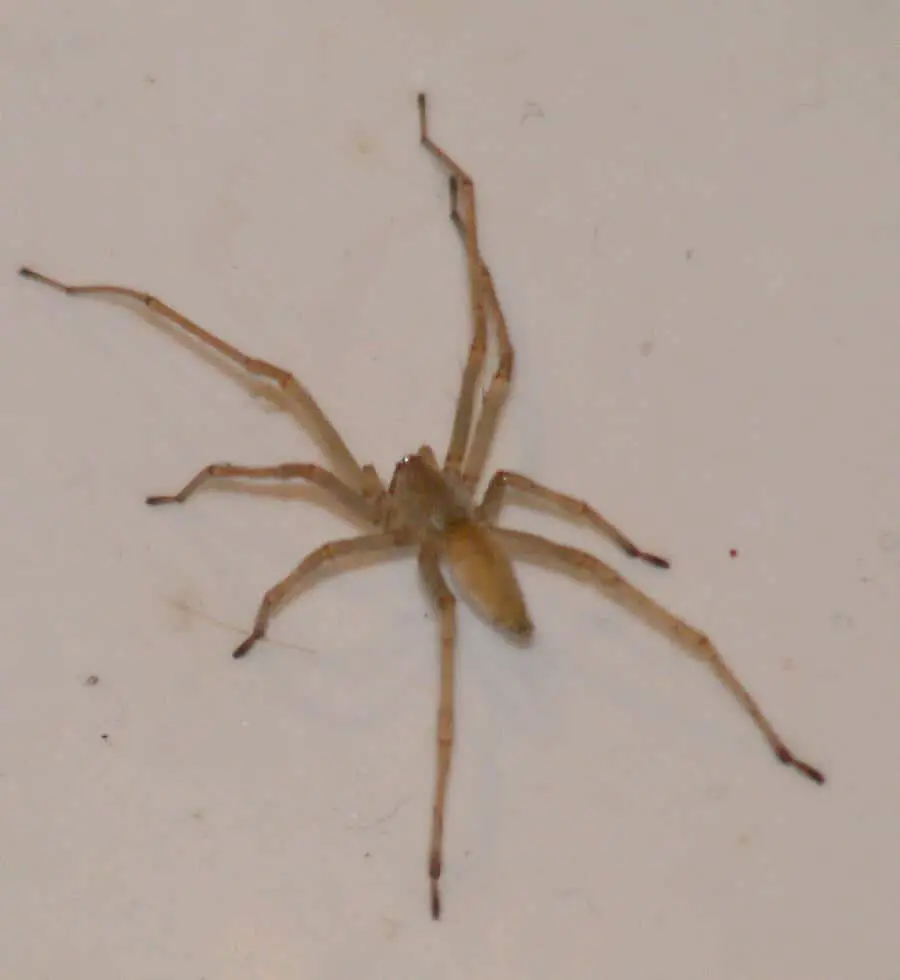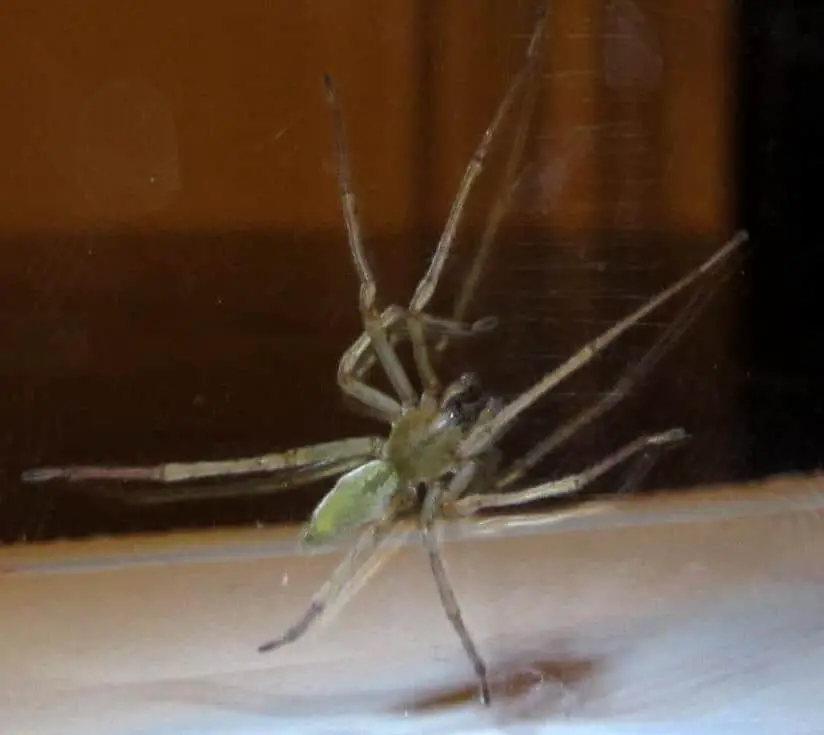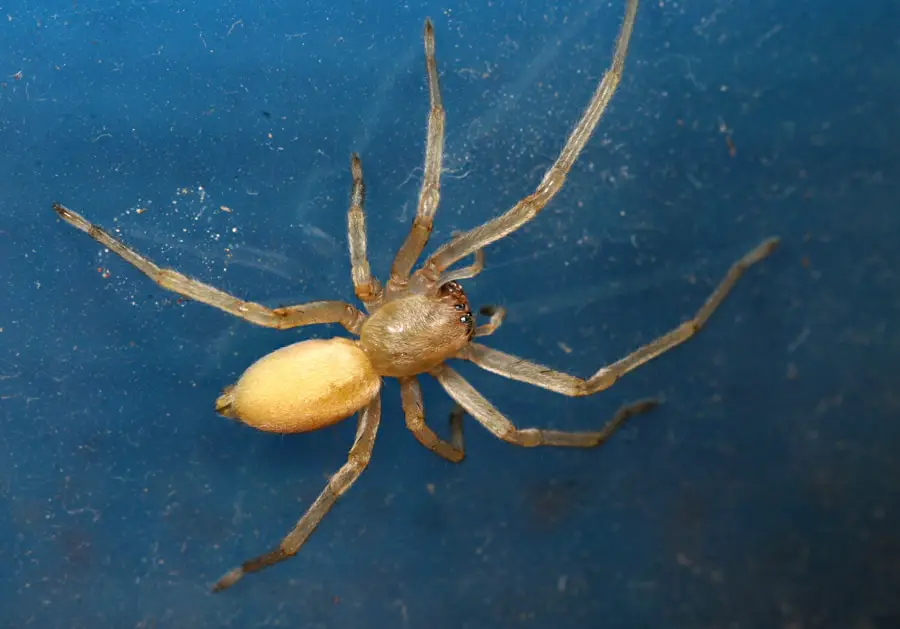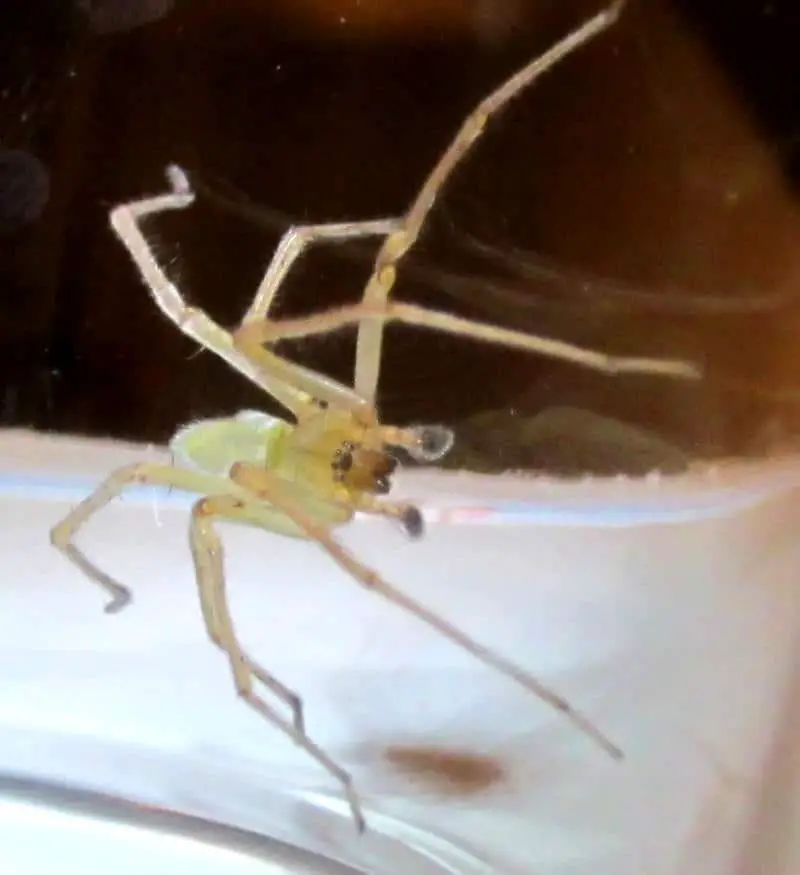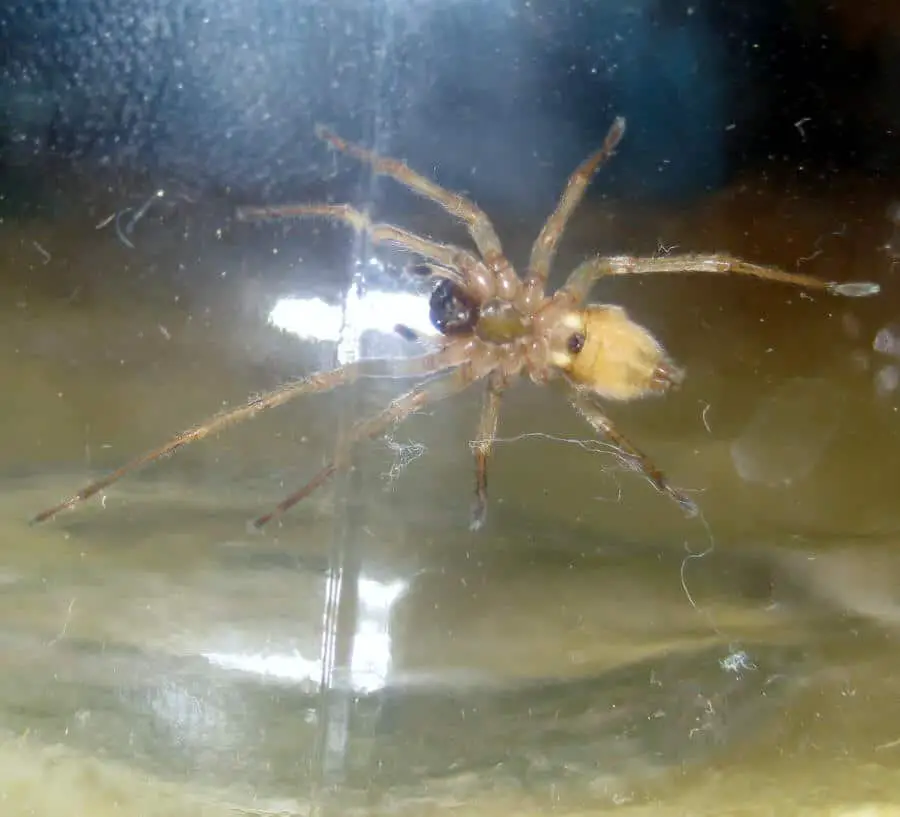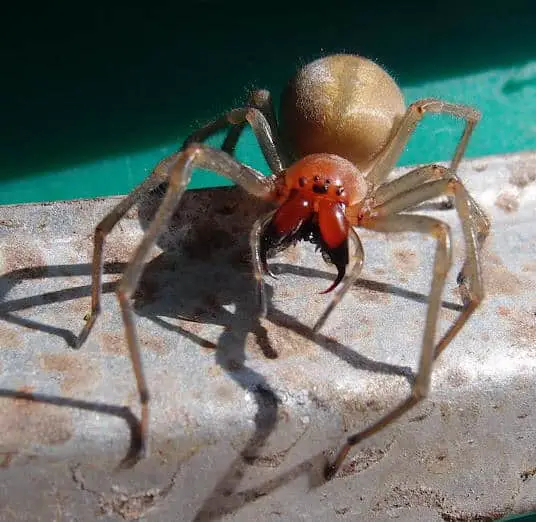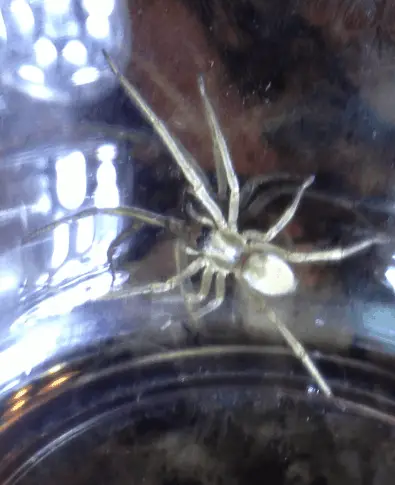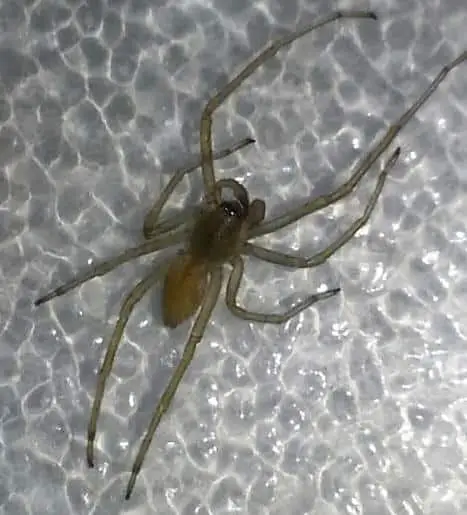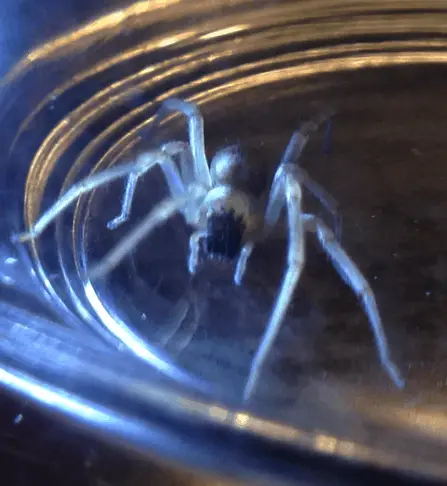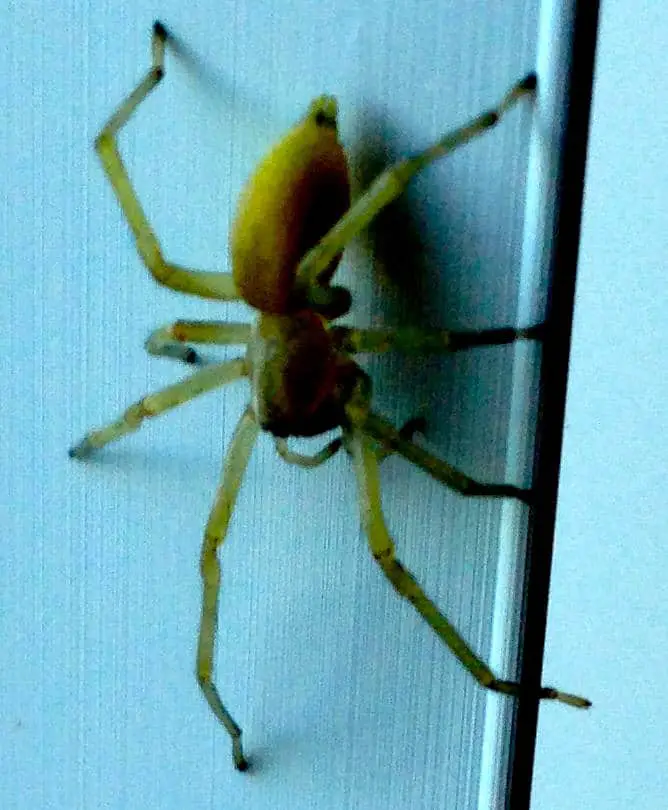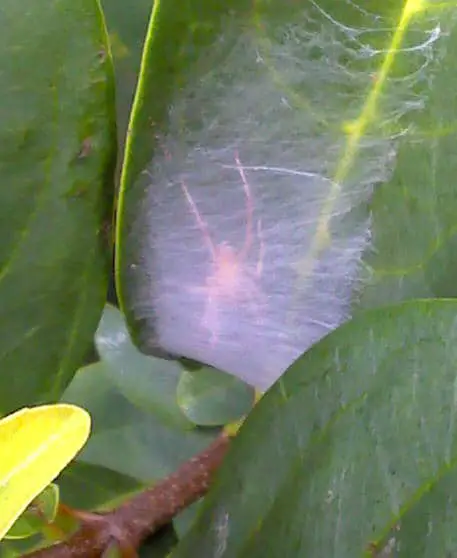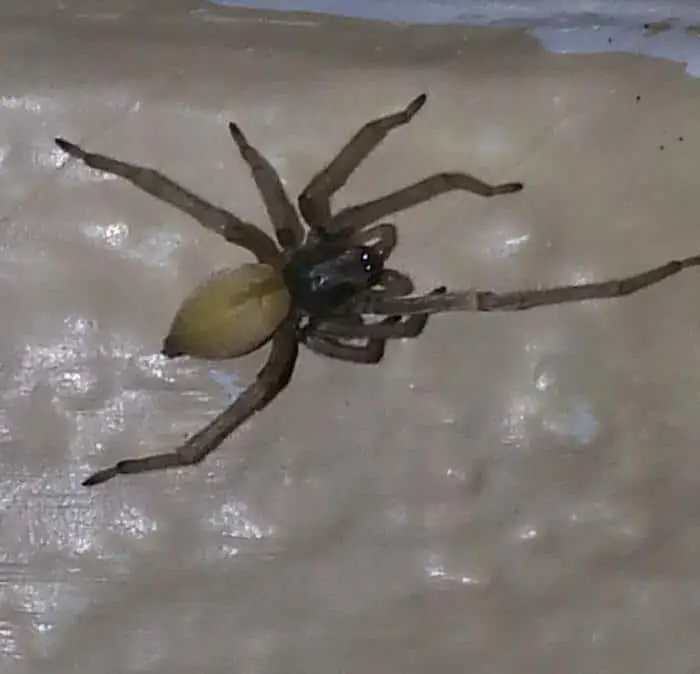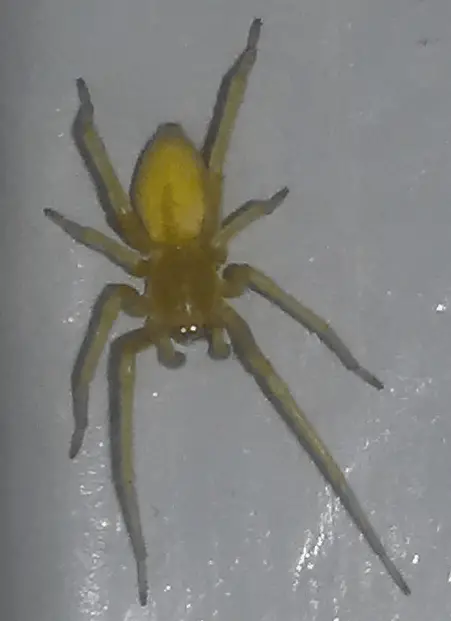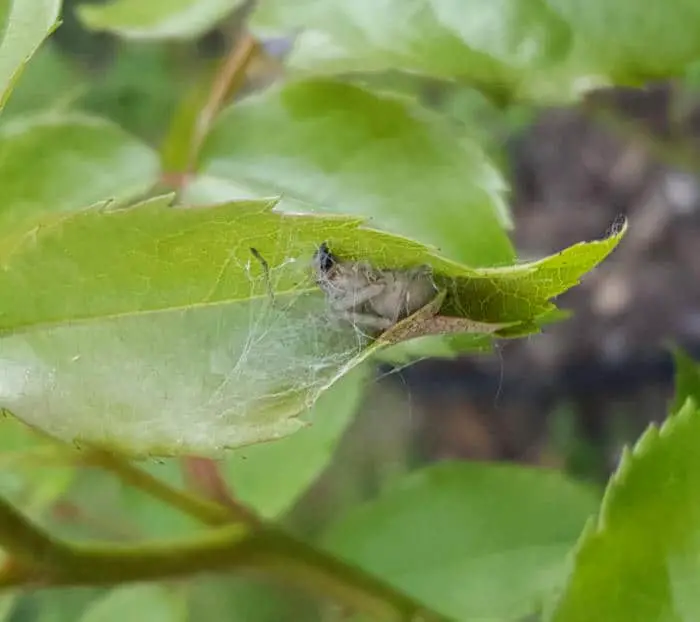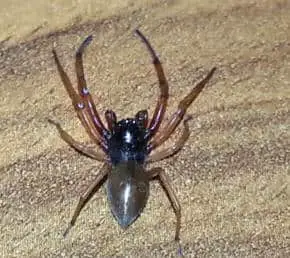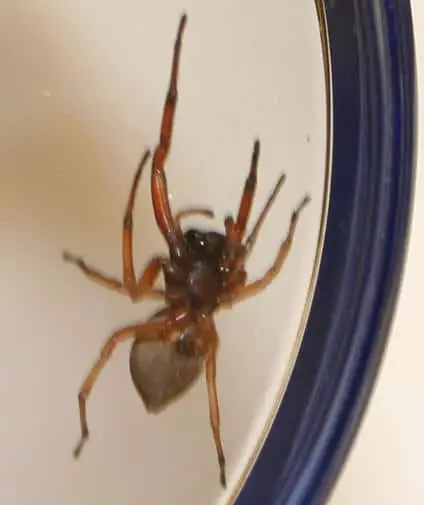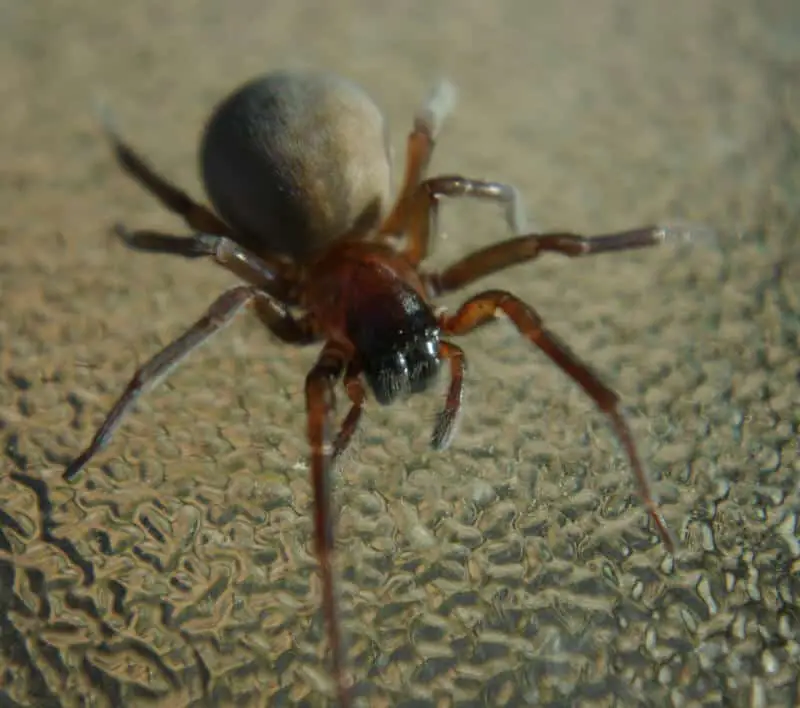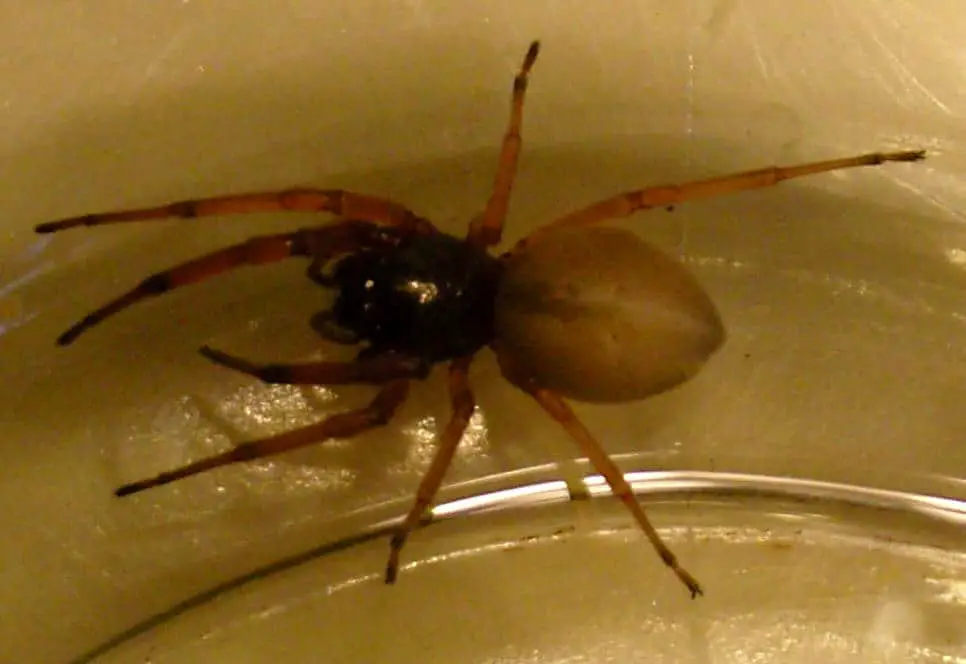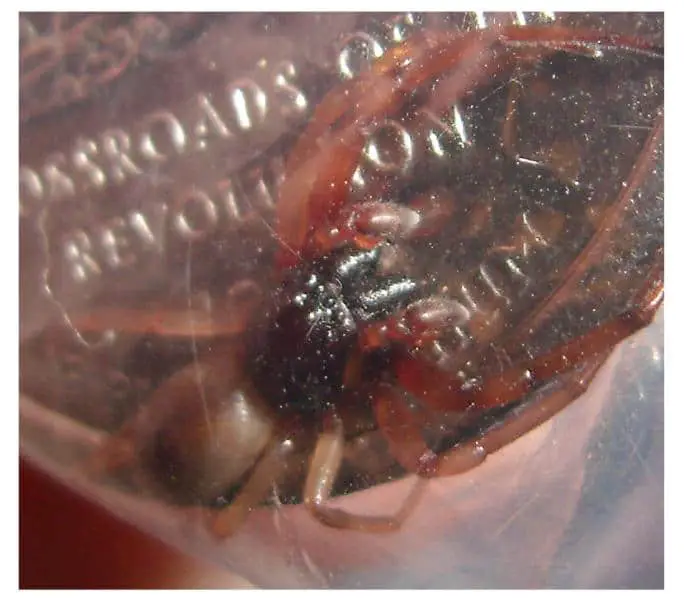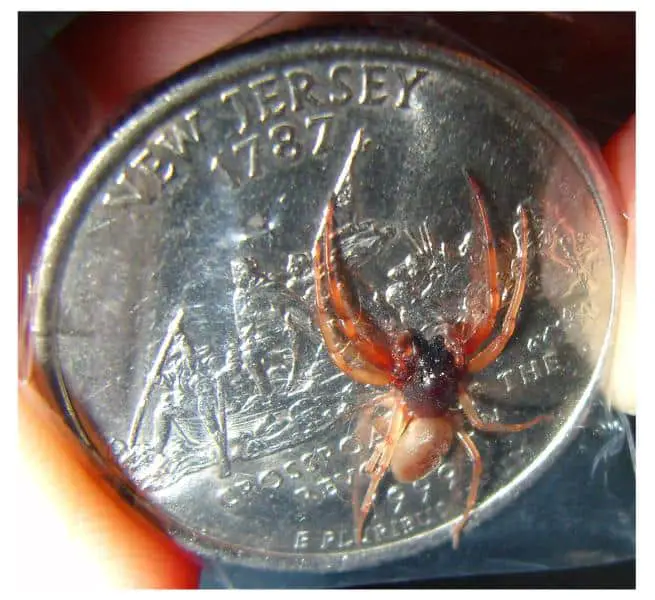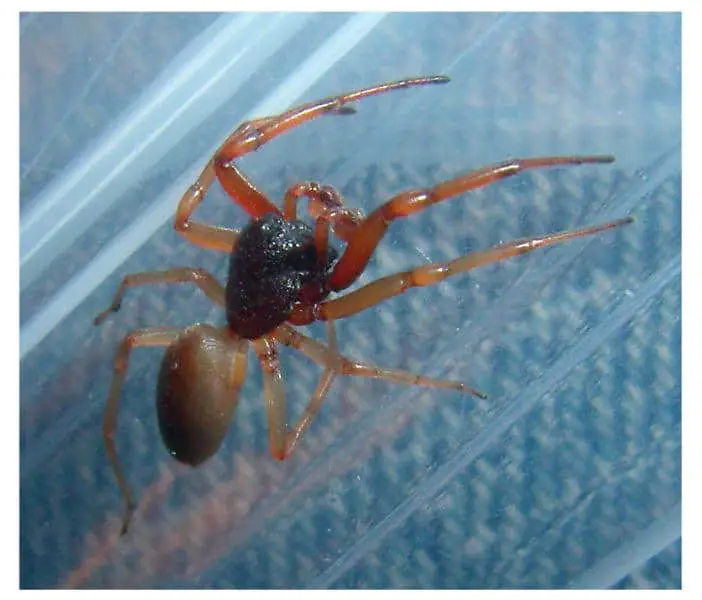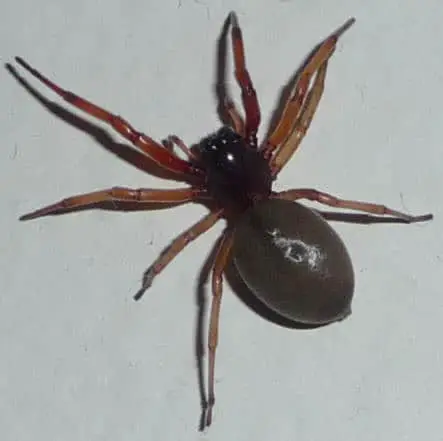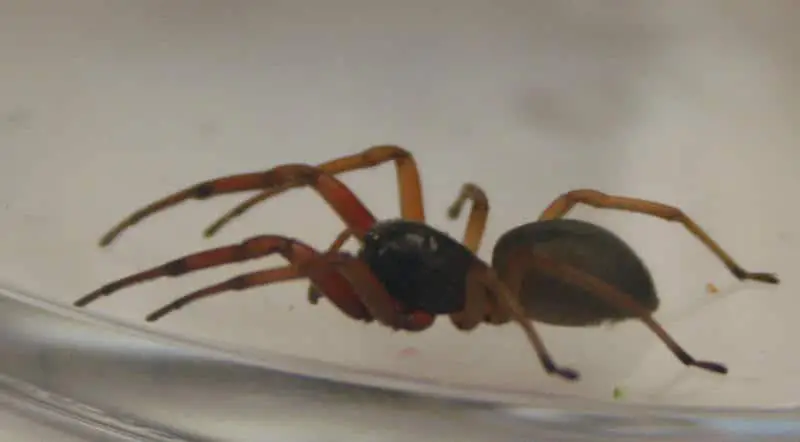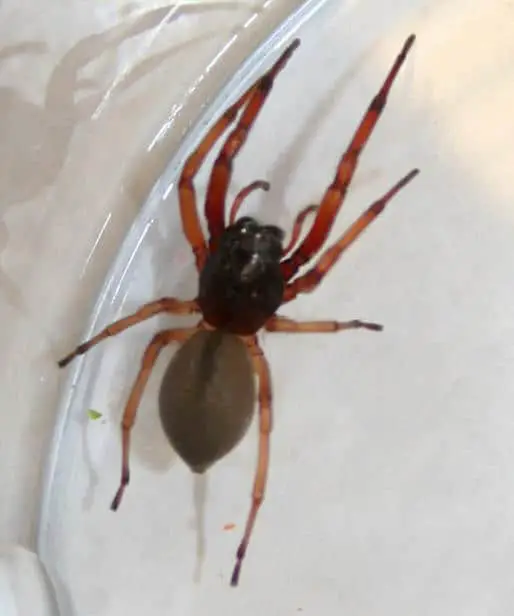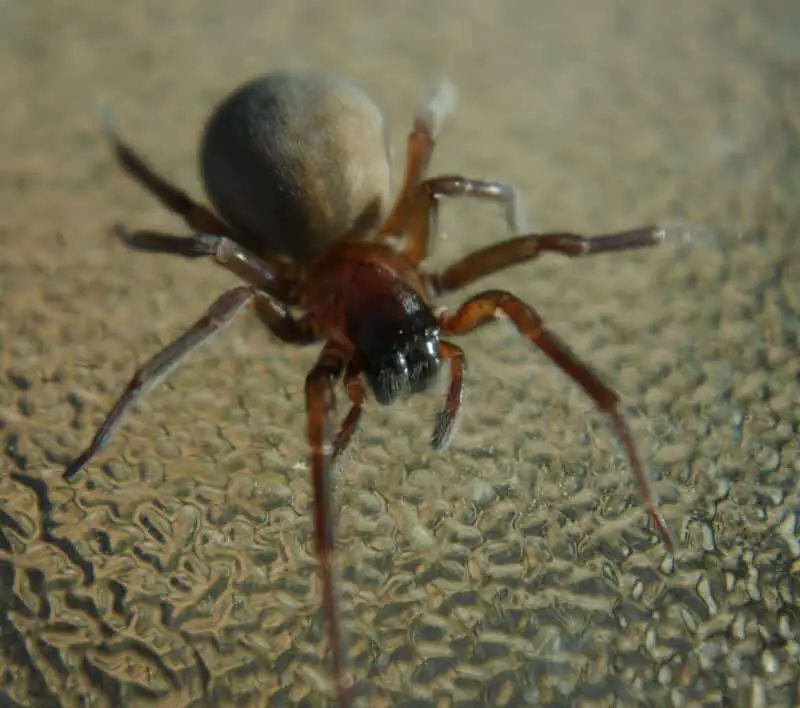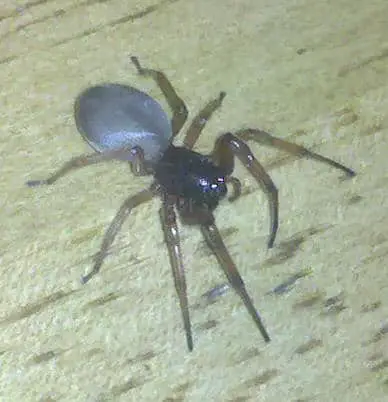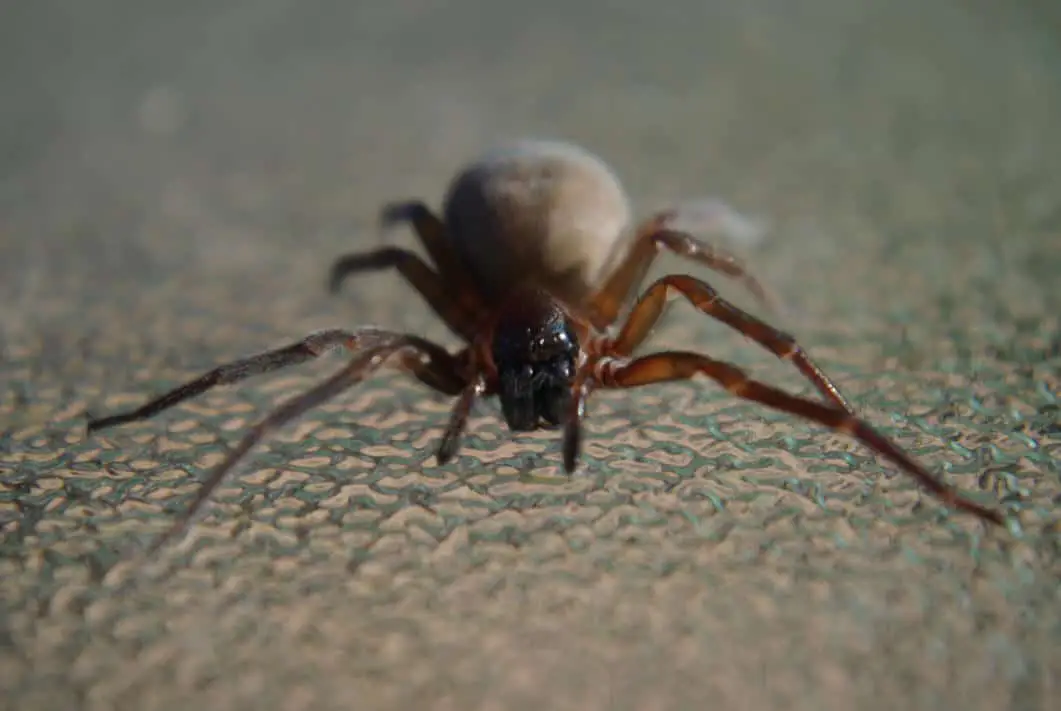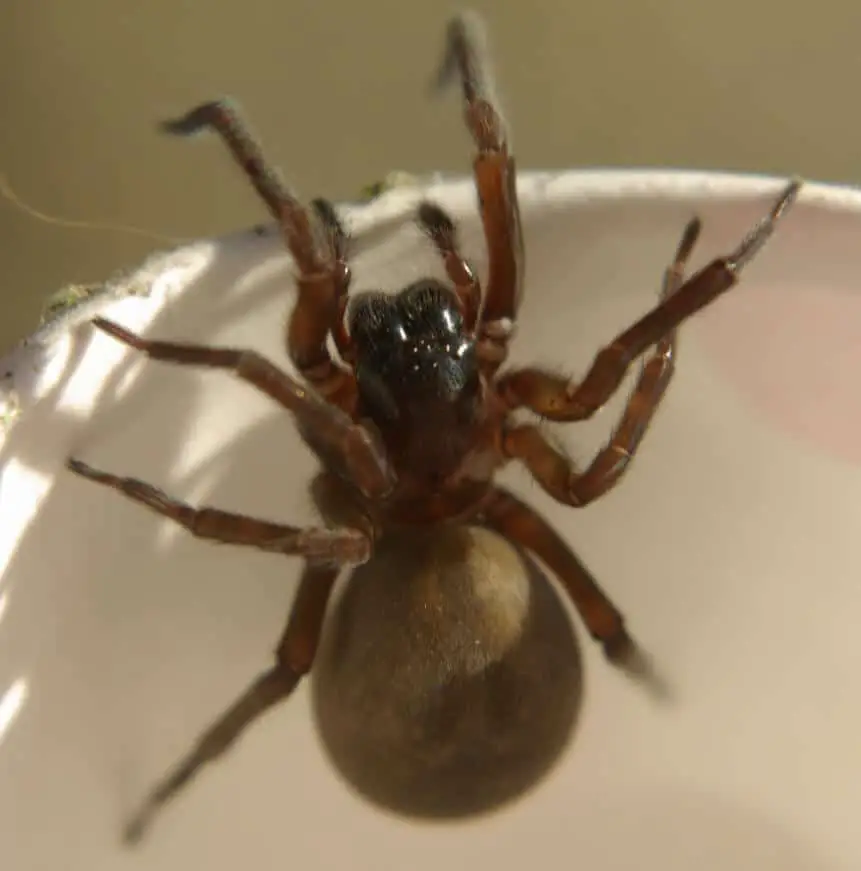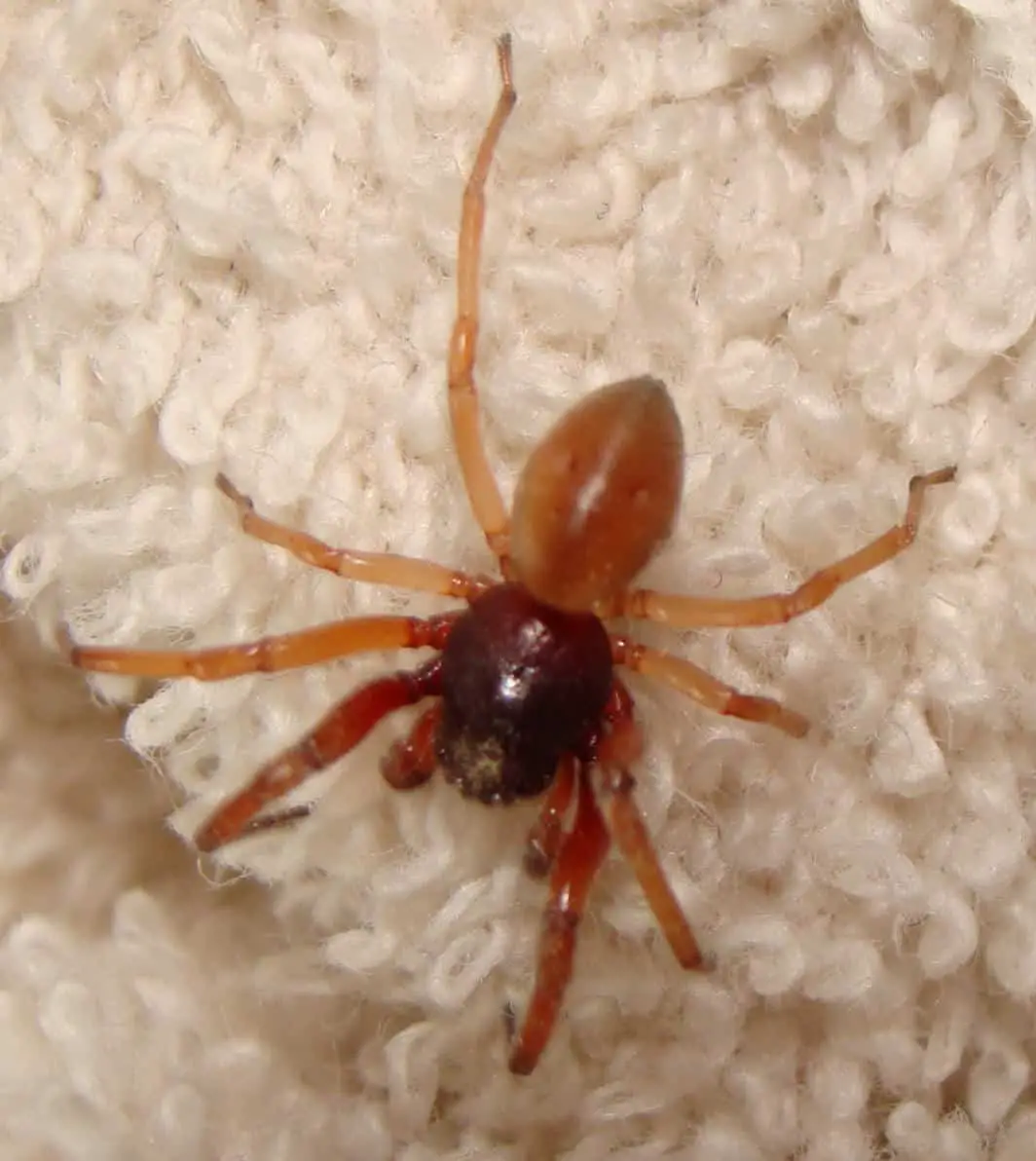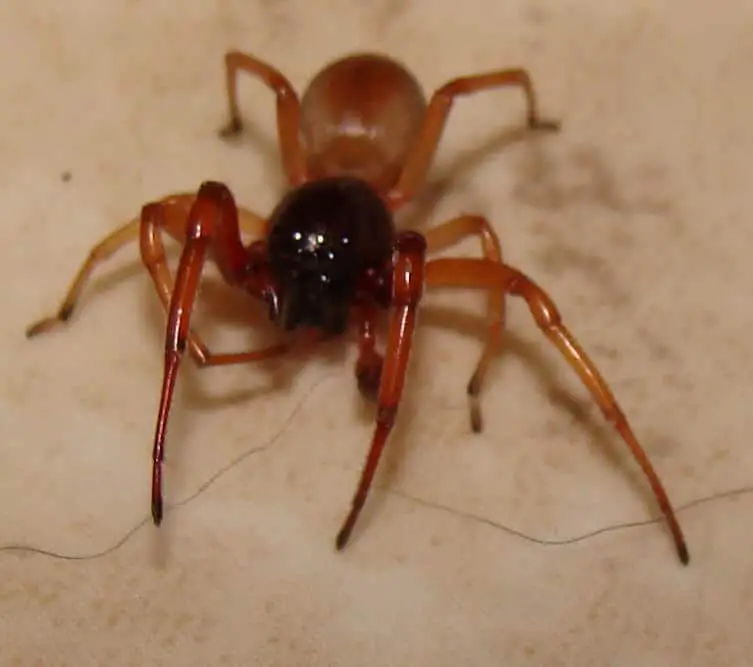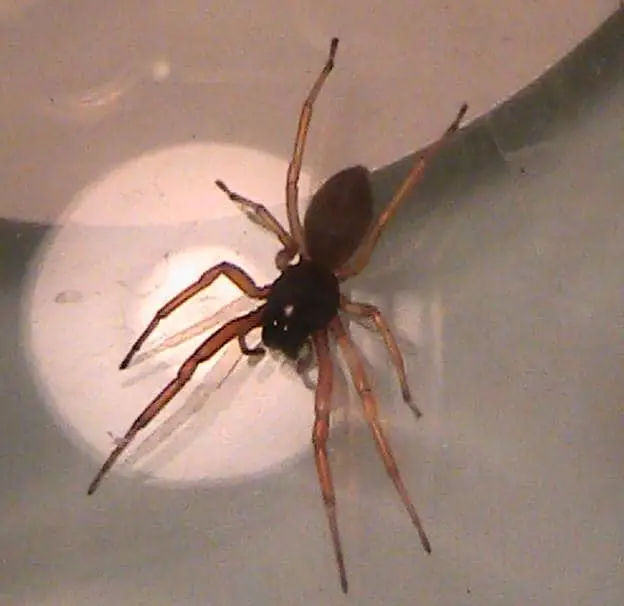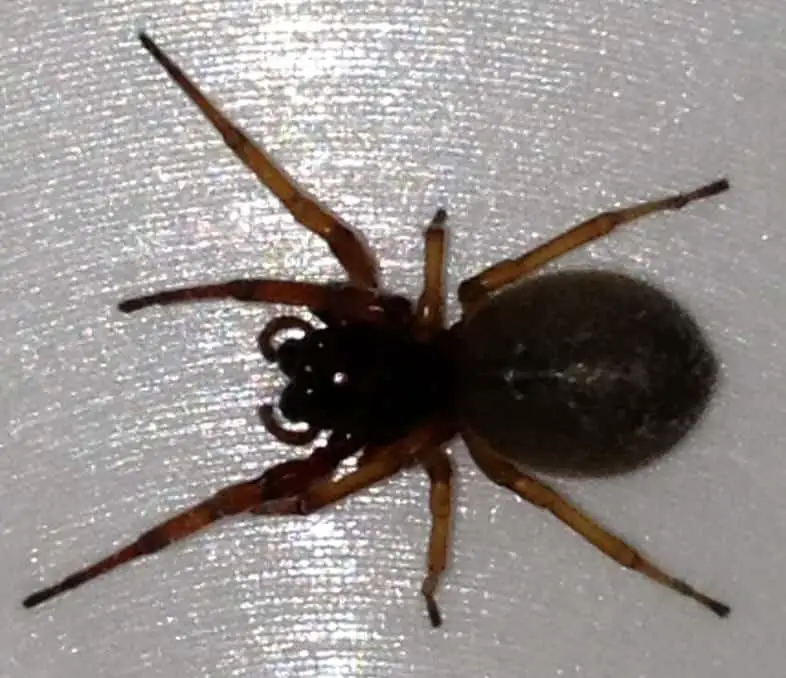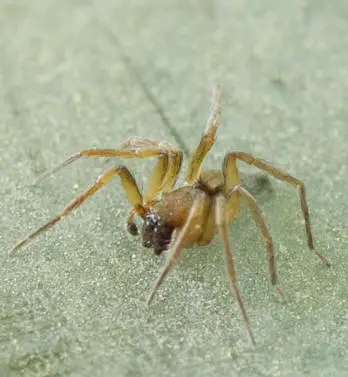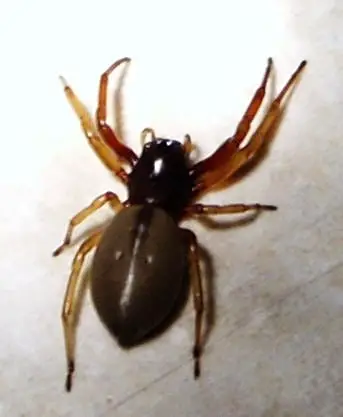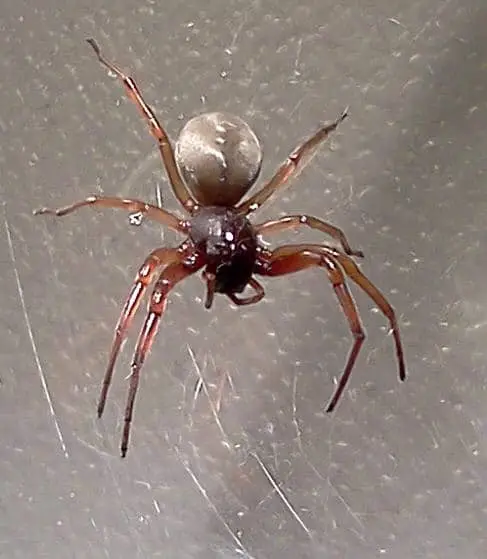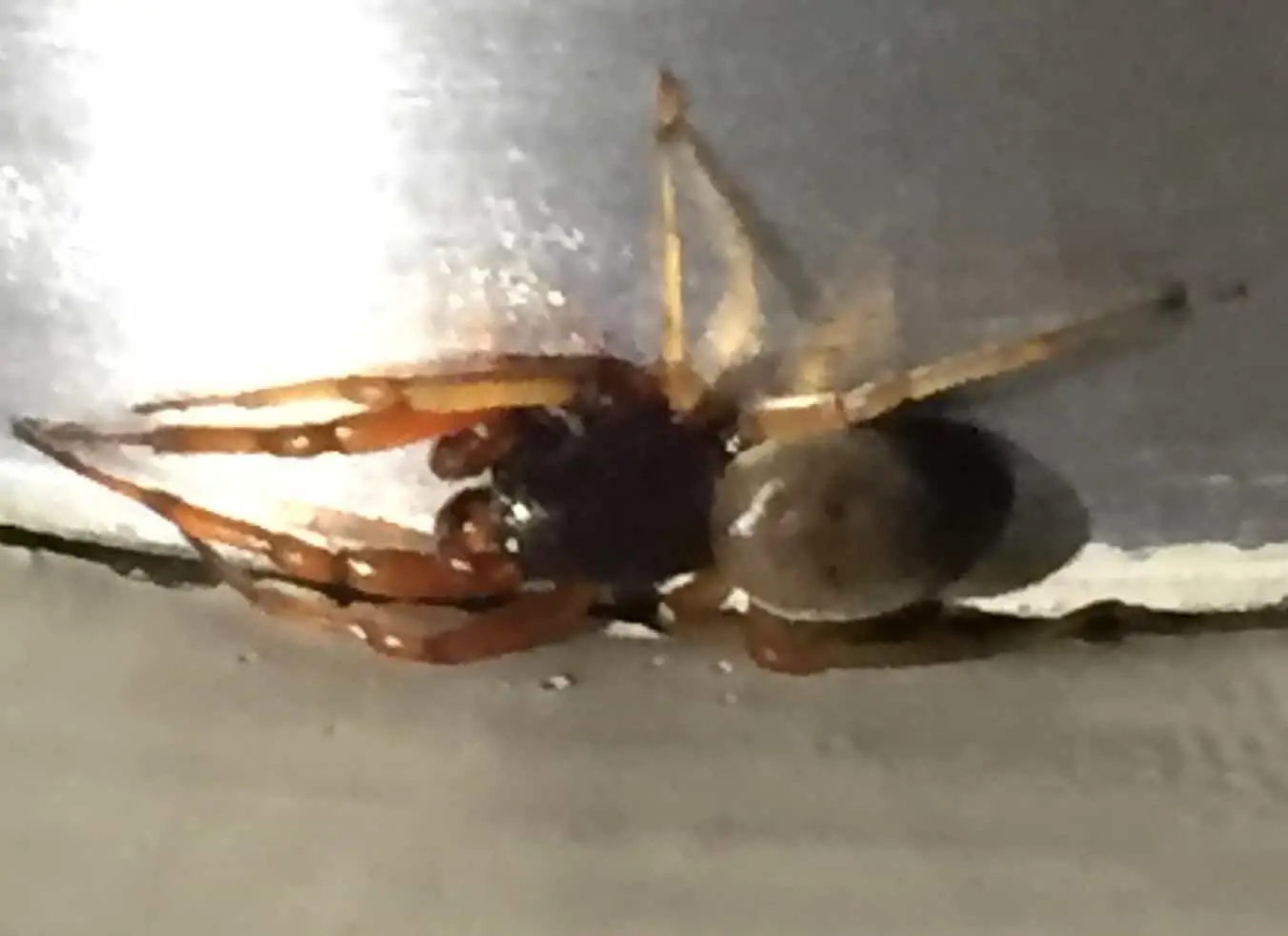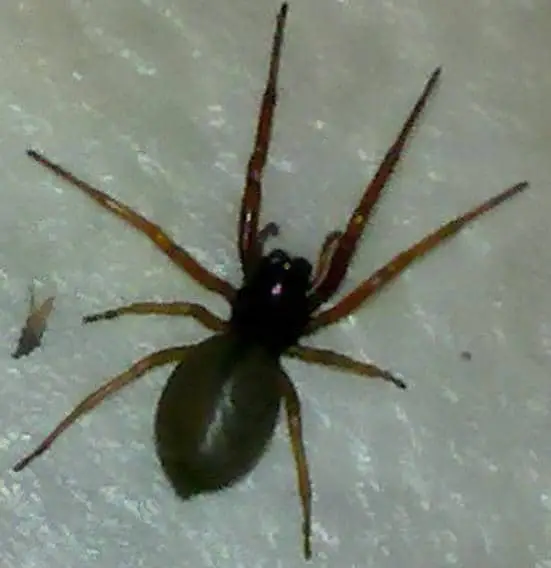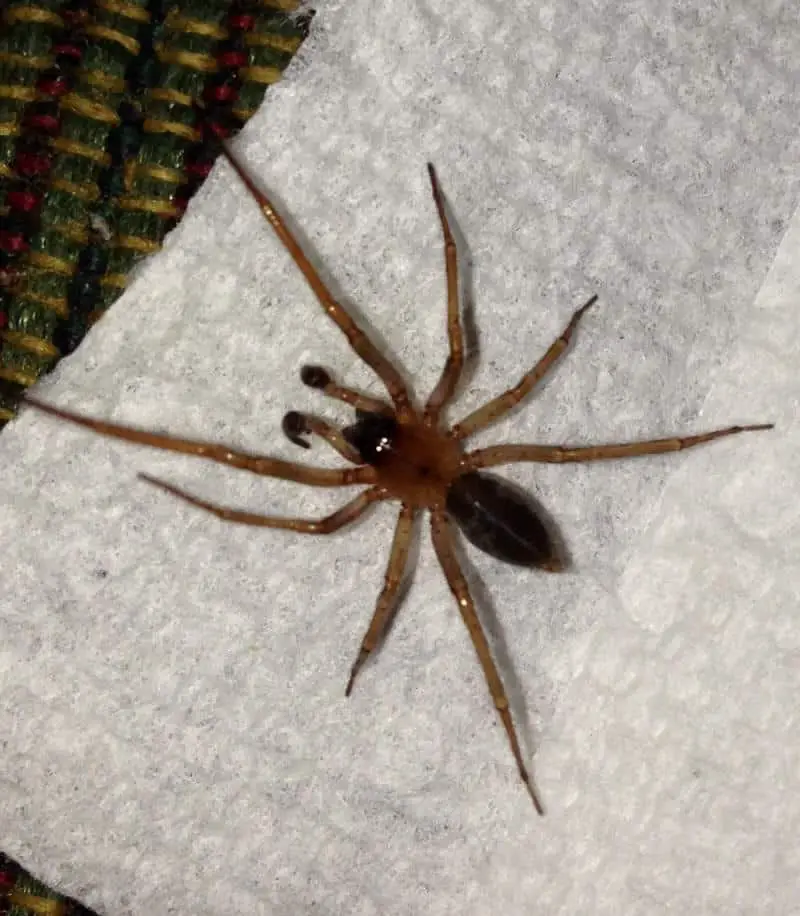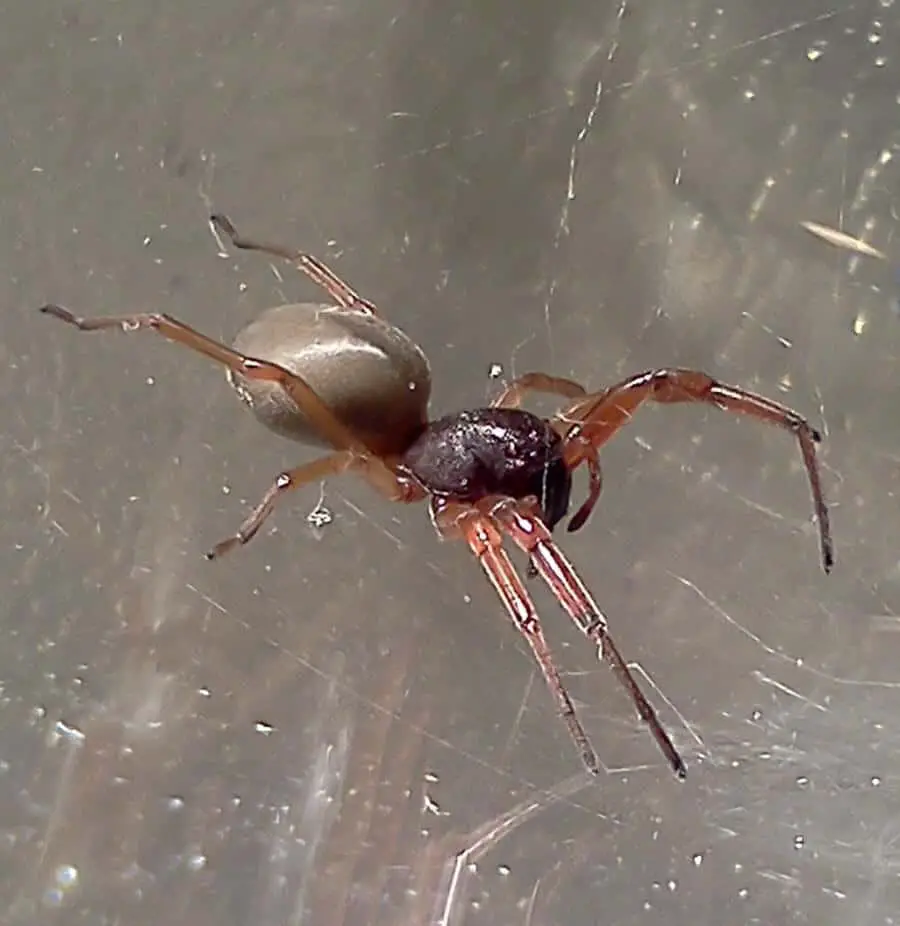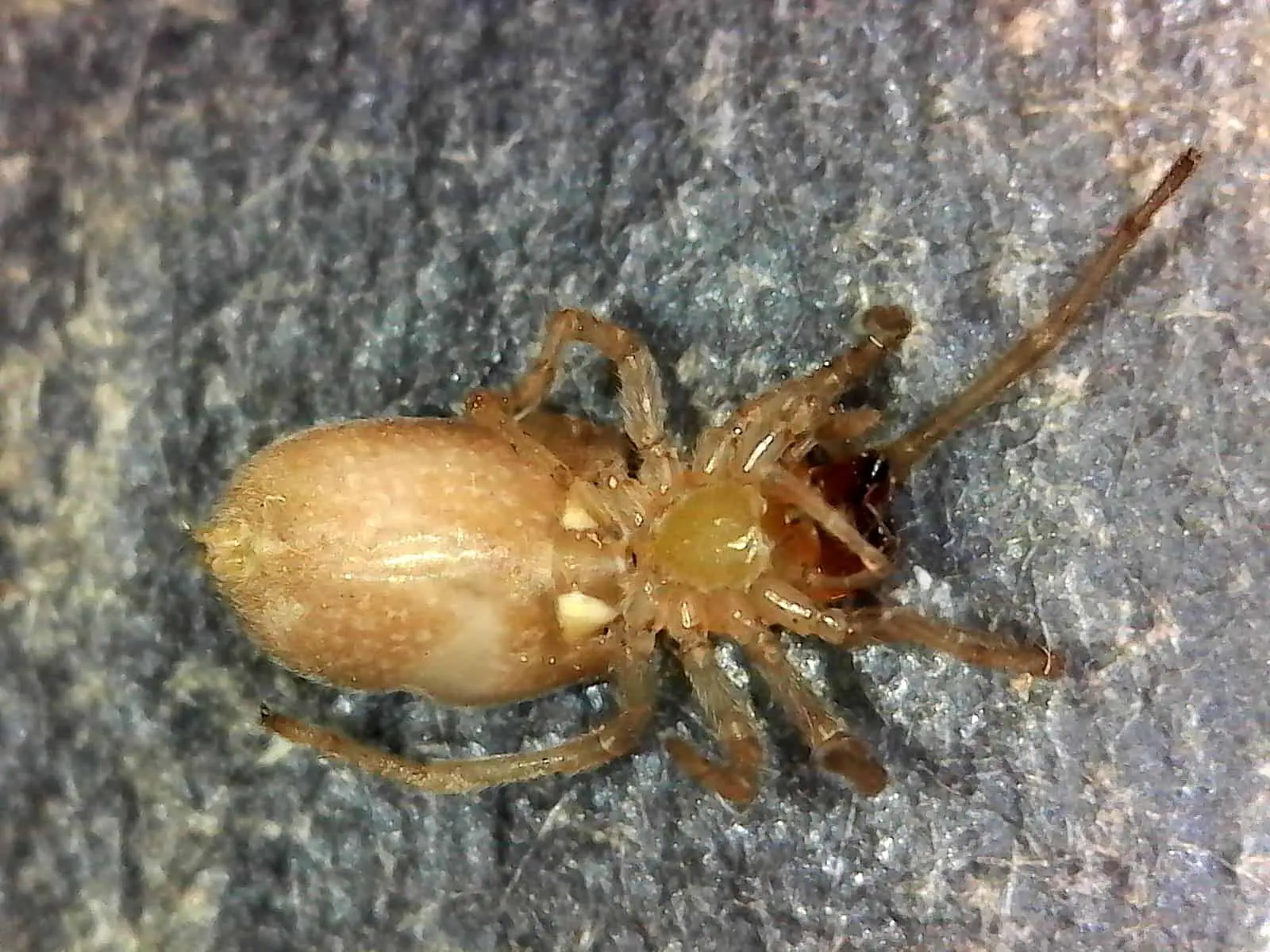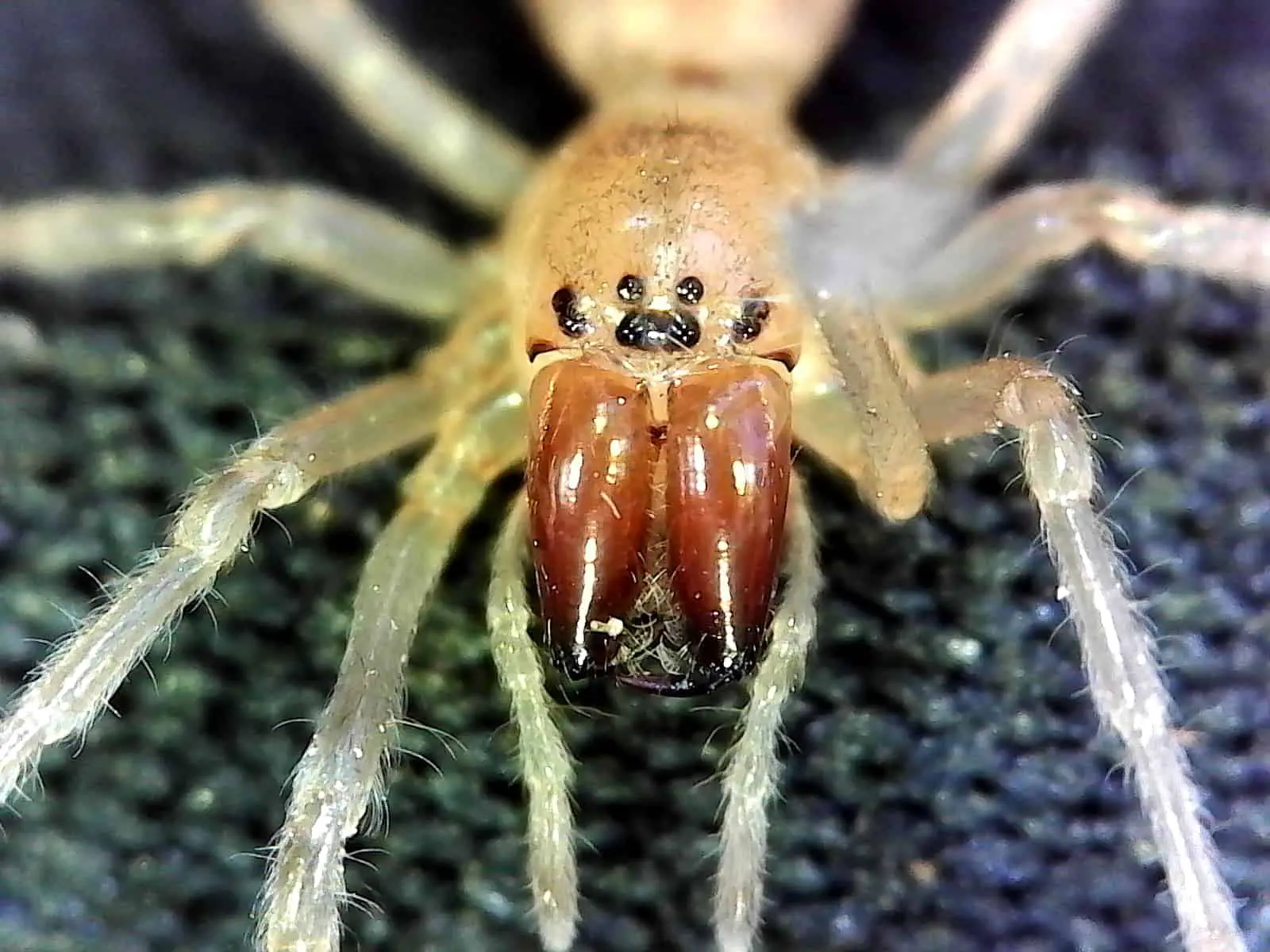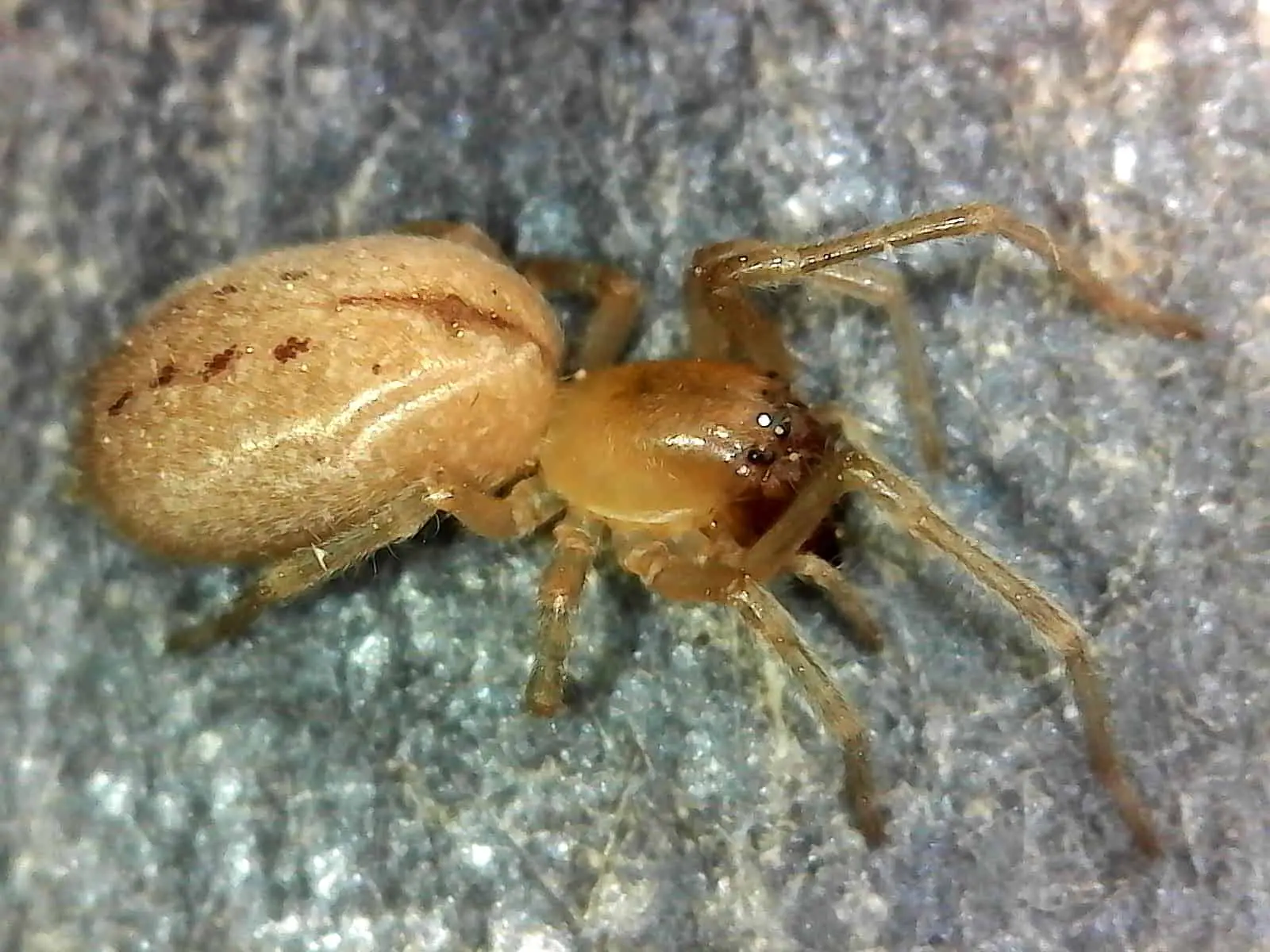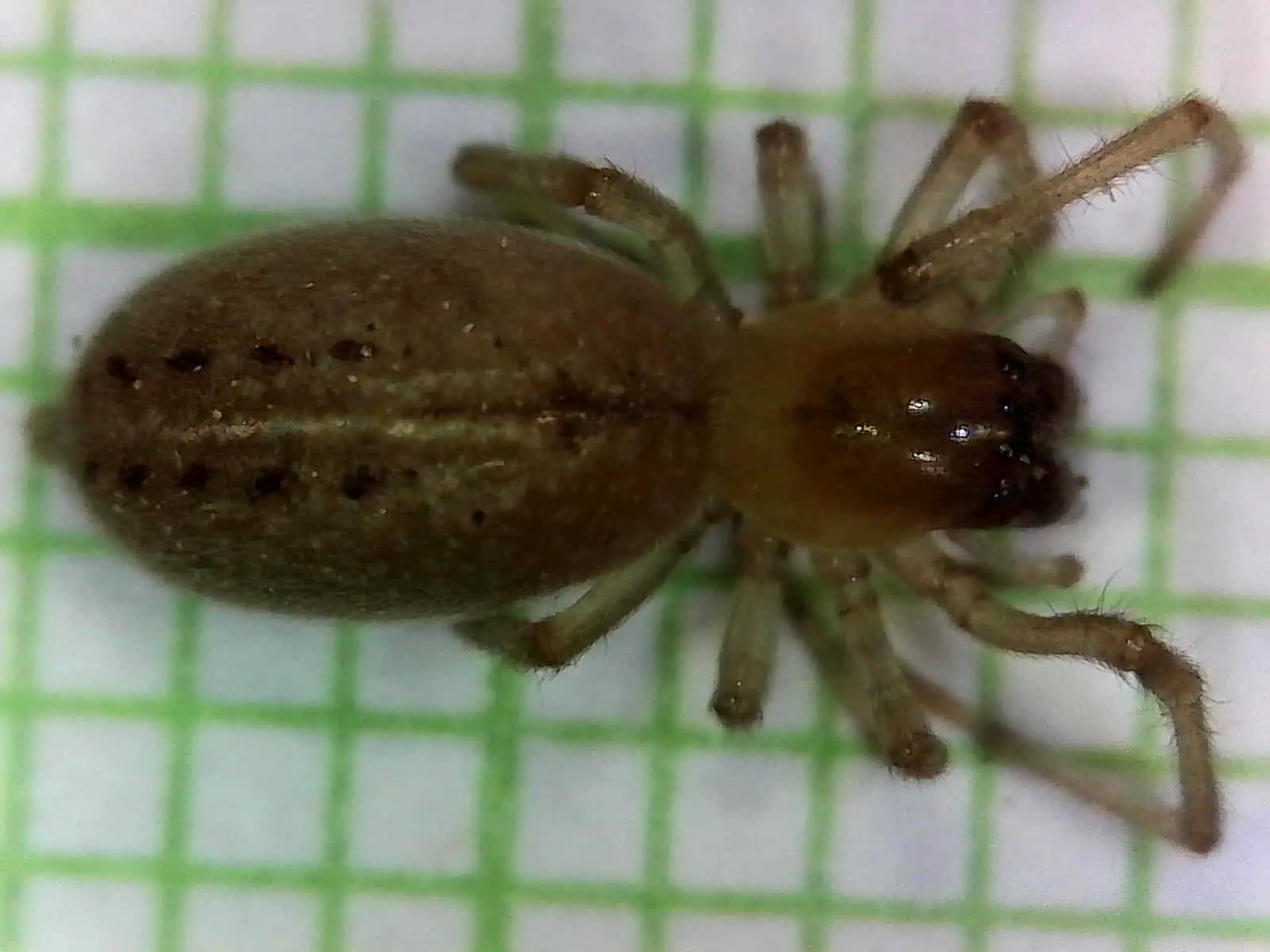Sac spiders belong to the genus Cheiracanthium and the family Clubionidae. They are quite small and easy to overlook—about 1/4 – 3/8 inch long, with no conspicuous markings. The front legs are longer than the other three pairs. Sac spiders are quite pale. A common house species, the yellow sac spider is pale greenish, tan or straw coloured. Other sac spiders are light brown. Sac spiders typically have darker mouthparts and a faint dark stripe running lengthwise down the abdomen. Normally, these are outdoor spiders, but sac spiders often invade structures.
Their numbers increase significantly in the fall when the weather turns cool and their food supply disappears. If there are small insects available, sac spiders can become established indoors. At night, sac spiders actively hunt their prey—usually small insects. In search of prey, they run quickly waving their forelegs before them. Indoors, they can be observed on walls and ceilings, but drop to the floor to seek cover when disturbed. Sac spiders construct a silken tube or sac in a protected area, such as within a leaf, under landscape timbers or logs, or at the junction of a wall and ceiling, and they use this sac as their daytime retreat. This is how the sac spider gets its name. These spiders do not build webs.
After mating, females lay 30 to 48 eggs and cover them in a thin coat of loosely spun silk. The small, white, paper-like sacs are often found in easily overlooked locations, along ceilings and corners, or behind pictures and shelves. The female may guard these egg sacs and may produce several egg masses during her lifetime. Inspect for sac spiders by looking for sacs in upper corners of rooms, ceilings, behind pictures, on window moulding, blinds or curtains. During the day, sac spiders may be inside these sacs so vacuuming is an excellent method of control. Remove and discard vacuum cleaner bags to prevent reinfestation.
All photos are copyright to their owners and may not be reproduced without permission.
Table of Contents
Yellow Sac Spider
Yellow Sac Spiders (Cheiracanthium mildei) are usually pale in colour, and have an abdomen that can range from yellow to beige. Both sexes range in size from 5 to 10 mm. Of all “common house spiders”, they are the only species whose tarsi do not point either outward (like Tegenaria) or inward (like Araneus), and are therefore easy to identify.The venom of sac spiders contains a cytotoxin—which means it kills cells—like the venom of a brown recluse. Unlike brown recluse bites which can take 2-3 months to heal, most sac spider bites heal much more quickly, although the reaction will vary greatly from individual to individual. Typical symptoms of a sac spider bite include a stinging sensation followed by redness and mild swelling. In a few cases, the bite may blister and break, leaving a sore that can take several weeks to heal. Sometimes the person will feel mildly ill
Broad Face Sac Spider
The Broad Face Sac Spider, (Trachelas Tranquillus), is often confused with the woodlouse hunter, being similar in shape & colour. Its abdomen is more sac shaped however and is a light yellow/grey with a darker marking on the dorsal side. Its cephalothorax is dark with enlarged chelicerae. Its foremost legs are the darkest and get lighter towards the back legs and it grows from 3 – 10mm. It is normally found Normally found at the base of plants, in grasses and in ground debris. In the United States is is found in New England and adjacent Canada south to Georgia and Alabama and west to Kansas and Minnesota. This is a hunting spider so it makes no web. However, it builds a sac like tube to hid and rest in diurnally which is also used to protect its eggs in autumn. This spider tends to forage on other dead arachnids and insects which can cause its bite to be particularly unpleasant due to infections.
Long Legged Sac Spider (Family Miturgidae)
Long Legged Sac Spiders/Cheiracanthium Sac Spiders usually have a cream or straw-coloured body, with very black chelicerae and face. The black face and chelicerae are the most indicative feature of these spiders. They have long front legs that are often held out forward and bent. They build temporary sac-like silken retreats in leaves, folds in curtains, and in the corners of rooms. They often venture indoors to hunt at night. Of all the commonly encountered spiders in East Africa, these are the ones to be the most wary of.
Cheiracanthium sac spiders are found throughout most of Sub-Saharan Africa and, as they are not web-bound, wander around looking for prey. As such, they are encountered often, especially at night, and account for about 75% of all spider bites in Sub-Saharan Africa. Cheiracanthium venom is cytotoxic, and therefore destroys tissue cells. The initial bite is not painful, so often goes unnoticed until later when it becomes swollen, red, and itchy. This develops into a boil-like sore and can cause great pain and fever that can last up to two weeks.
There is not much first aid that can be applied other than treating the symptoms like pain and fever. Similar specie: There are other, similar looking, types of Sac Spiders from the family Clubionidae that are completely harmless and should not be confused with the Long-Legged Sac Spiders from the family Miturgidae.


